|
Commissioned Doll: A Big Hug Greetings all! Recently I mentioned this commissioned doll in a blog post. This doll was a joy to make and I wanted to share her story with you. I hinted at some of her story in the above blog post but today I can tell more of her story. I was given permission by her new owner. Her name is now "Heather," very touching to me (because it is the German version of my name. Heather/Erica is a kind of flowering bush.) Heather flower I first receive the commission A friend of mine from college (Bowdoin in Maine) recently asked me if I would make a doll for a special friend of hers who lives in Berlin, Germany. I told her I'd be happy to do so and we worked out the details. First I asked her to send a list of questions to her friend. These questions include things like: what parts of your body needs healing? What are your favorite animals? Your favorite fairy tale? Once I get the answers, it usually takes quite a long time to figure out how I am going to make a particular commissioned doll. That's why I don't do them very often. The first step is to make some sketches. In the images above, the first steps, including false steps..sketches, practice patterns, and her sculptural needle felted head and hands Working through various versions of the doll... I found as I went along, that I loved Pesha's answers to my questions. Many of her favorites were similar to mine. She loves elephants, squirrels and butterflies. Her favorite fairy tale was the Frog Prince. She asked for healing in various parts of her body. As I worked with these ideas, an image of the doll came clearer in my mind. I had at first envisioned her as smaller with a stitched face. First version You can see that first version of the doll above. I sat with this version for a while but eventually realized it wasn't right. She wanted to be larger and softer. One of the things that my friend had asked for is a doll that would be "like a big hug," and this smaller doll didn't seem to meet that need. So I turned to sculptural needle felting to make her face and hands. Steps along the doll making process, the back of a stitched panel for her chest, and another view of that panel painted with fabric paint. Elephants added along the edge of the jacket. Her hat and then her tutu. Working along, step by step Above you can see how the doll comes together, step by step. I add elements from the fairy tale on the chest of the doll. You can see an image of my initial stitching of that story for the chest of the doll, from the back. I often like the way stitching looks from the back, a record of what is there but a bit blurred. I decided to give her a jacket and to put the elephants on the sides of the jacket. I had researched about the symbolism of elephants and one of the stories talked about elephants being stacked on top of each other, a kind of origin of the world story. Pesha is particularly fond of squirrels and so I decided to make them a central part of the doll. They became a symbol of healing. I gave each part of her body that needed healing its own special squirrel, along with one of the symbols from a list of favorite symbols she had shared. One of the last steps was adding a tutu as a skirt. I had gotten a sense of Pescha's playfulness and sense of humor and felt that this would fit her personality. I used a range of her favorite colors in the tutu. Detail view of the hat and of the doll as she progresses, including a special pocket inside the jacket The hat with parrot feathers She also got a hat and on the hat, I added parrot feathers, another of her chosen animals. I found someone on Etsy who sells feathers that her pet parrot molts. I gave the jacket an inside pocket where Pesha could add her own messages or special small objects. Working on the shoes and felted feet-the first shoes I ordered were too small The question of shoes I had an idea of wood shoes. I ordered these first ones but unfortunately, I hadn't measured correctly and they were too small. I found some larger ones, painted them, adding the healing squirrels (her feet needed healing) and then I made some sculptural needle felted feet. The symbolism of the various parts of the doll When I make a commissioned doll, there is a lot of meaning that goes into each part of the doll. I collect symbols, stories, colors, and various other elements that have meaning to the person who is going to receive the doll. But I also research about the meaning of the various symbols and that gets woven into the final creation as well. I will go into more detail, as an example, with the elephant symbol. Here is part of what I wrote for Pesha in the little book that I sent her along with the doll, to explain my process and thinking about the doll: "Elephants are an earth symbol and represent ancient power. The elephants adorn your healing doll’s jacket. In addition to ancient power, elephants represent strength and even royalty. Elephants live on a grand scale. They have a splendid “largesse of soul.” Their cushioned feet (healing fours) are especially attuned to the earth’s vibrations. Elephants are so large that they actually reconfigure the topography of the land they walk on..." I went on to write about the meaning of the elephant's tusks, the trunk and also to describe various folk and fairy tales that have elephants as protagonists. This is part of the fun for me as well, as I get to benefit from the learning that comes from this kind of research. And it makes it more meaningful for me to be able to add all of these layers into the final product. 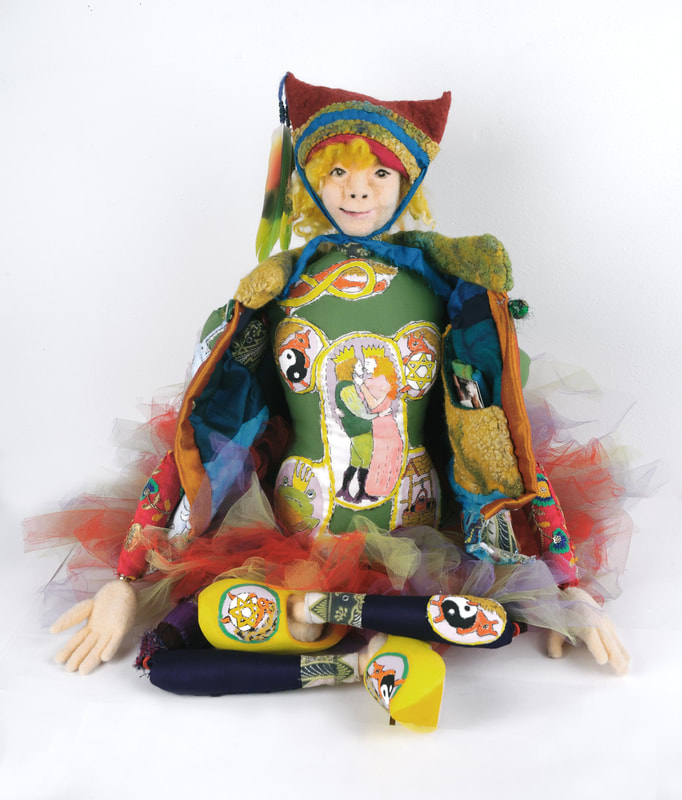 The final doll The final doll The doll's long journey to Berlin There was another part of the story of Pesha's doll that any of you who follow me on Facebook or Instagram might have read about. It became quite a production sending her to Berlin from Washington, DC. We decided to use DHL since it is a German company. Yet, somehow she still ended up taking longer than expected. She flew to Ohio, then to New York City and then back to Ohio-finally making her way to Leipzig in Germany and then the last leg to Berlin. Along the way, her box had to be opened by customs, once or maybe twice. I was worried about her the whole way. I wrote about this to my readers on Facebook and Instagram and she had a team of people praying for her. We were all so happy when she finally made it to her new home! Pesha's doll on her couch in Berlin. She is still choosing just the right place to keep her
0 Comments
Happy New Year! Hey and welcome to the new year! Earlier this week, I went on a lovely field trip to see the new Matisse exhibit at the Philadelphia Art Museum. So inspiring! Afterwards my friend and I drove through the city looking for a place to eat. We weren’t having any luck with the on-line guides to restaurants. We weren’t finding anything and then just decided to park just because there was a spot. And it turned out we were in front of a delicious Chinese take-out restaurant, with “hand-pulled noodles,” so it turned out perfectly. Sometimes life is like that. What follows is a kind of long e-mail, since I haven’t written here in a while. From the Matisse in the 30's exhibit, three color studies for his "The Dance" commissioned triptych. Not wanting to “push against the stream” Up until the writing of this newsletter, I have been easing into the year very slowly. It was both because I wanted to take time to absorb all of the events of the last year, which for me had been quite busy and eventful. I wanted to take the time to reflect on what had gone well, and what had gone not so well. I didn’t want to “push against the stream” or go against the flow of what needed to happen. Finally, this week, I have felt that it was ok to move forward and I got confirmation from this newsletter from Beth Owl’s Daughter, a wonderful tarot guide, whom I have been following for a while. Review of 2022 What I did was to reflect, using imagery and reviewing my journals of the past year, first on what I had experienced internally and in the outer world, over the past year. I went through all my journals, including my dream journal, looking at themes. I did several drawings after this review, not exactly reproducing what I had discovered, but more, reacting intuitively to collage images that showed up and my responses to them. I also drew some tarot and oracle cards. Below are some of these images. Finally I created a vision of 2023, again responding intuitively to collaged images that I found, and then worked into those images. The image that resulted is below. The angel at the top playing a web into being is an image I have been sitting with for a long time, in various forms. As is the sort of "green man" below. and the narwhals and elephants. I need to mull over it for a while. I hung this image on my studio wall, along with my visions from 2019 and 2020. I didn’t do one last year because at the new year, I was still holed up at home with a broken ankle and couldn’t get to my studio. One realization that came out of this review was that I need to create a bit more space for time in my studio. I have a couple of projects that I haven’t been able to get to as much as I would have liked, so I have decided for now, not to offer the Maiden, Mother, Crone Death class this year. I hope to offer it again next year. See below for what I am going to offer this year, or at least what my plan is. I’m not making any big promises. Some of the collaged paintings I did as part of my review of the year. The last image is a detail from the image to the right. This process was inspired by a New Years visioning workshop offered by the wonderful Fonda Clark Haight Sanctuary: Take Comfort Now, collage, watercolor crayons, watercolor pencils Intentions for 2023 And now, to turn to a brief summary of some of what I am thinking of offering in 2023, so far. I may change my mind. Tending Your Inner Garden For the last two years, I have offered this seasonal workshop as a way of easing into the new year, tuning into the rhythm of the season. It was centered on an honoring of Imbolc, a Celtic celebration of early spring. This workshop was about celebrating the very beginnings of, the first sign of buds pushing up out of the ground, even though mostly early February is still a time of caring for our roots and reflecting. In the past, I had been asked by a few of the participants if I could offer this workshop throughout the year, celebrating each of the “cross-quarter holidays.” And so now I am deciding yes, I want to do this. I want to change my Imbolc offer somewhat and haven’t quite figured out how that will look yet. So, for this year, I am going to offer the e-book and videos for Imbolc, as a self-paced course. Over the course of the year, I will offer the three remaining cross quarter celebrations as “in-person,” Zoom sessions. Here is a link to the self-paced course, as well as the beginnings of a description of how this will look going forward. What are the cross-quarter holidays? In the Celtic tradition, these four holidays, Imbolc, May Day, Lammas and All Hallows come exactly between the two solstices (winter and summer) and the equinoxes. Each represent a more subtle shift in the season than these “main” holidays, where the shift is more dramatic. These four holidays are a means to tune in to the subtle shifts in the season and the ways in which they are experienced in our bodies when we are more in tune with nature. Here is a link to my description of this offer. For the last Befriending Our Shadow class, I suggested that the participants might want to make a small badge to represent their shadow. I created these four badges as examples. Befriending Our Shadow This course has staying power and I am going to offer it again this fall. Here is a link to this year's dates for Befriending Our Shadow VI and some of my other offers for this year. I am still processing the previous (fifth) version of this course that I offered last fall. What a wonderful group of women in this class! More about that later. What’s happening in my studio? One really exciting thing, you will already know about if you follow me on Instagram. Last year, I got a kind of big commission for a doll and it was meant for someone who lives in Berlin. The doll, which I made in response to specific intentions that the recipient had given me, took about four months to complete. But then it took a while to get it off to Berlin. Somehow, she got stuck at the airport in New York for longer that was expected. But she finally made it there last week. Pesha's doll, commissioned doll, now in the collection of a recipient in Berlin, Germany. She named the doll "Heather." Another doll, this small crone doll, also took a journey at the end of last year to a new home. She didn’t have to go as far, only to Raleigh, North Carolina. Small Crone, sticks and soft sculpture, mixed media, wall hanging, 13 x 10 x 3. 2021 And I am working on illustrating a children’s book, written by a friend, Channie Greenberg, whom I met after several collaborations on the Spark project. This is a collaboration between artists and writers, where the artist gives the writer an image to respond to and the writer gives the artist some writing to respond to. Below is one of the images I made in response to one of Channie’s stories in a Spark project a while back. Finally, as those of you who are local to the D. C. area know, I work in a studio at the Jackson Art Center. We have Open Studios twice a year and this year will also be hosting artist talks, many featuring our own artists. If you are local and interested in coming to one of these, here is a link to a list of up-coming events.
Images throughout the article are some of the steps of my making a shadow flip doll based on the Madness of Mis story...doll is still in process... We tend to avoid our shadows.... I talked in an earlier newsletter about how we tend to avoid looking at our shadows- And no wonder, why would we want to go into that dark, scary, swampy place inside ourselves when it feels so much safer to stay out here in the sunlight, safe and warm? And yet…(continues below...) Once upon a time… Back about twelve years ago, at a time of great change and upheaval in my life, I started to try to write a novel. Looking back at it now, I can see that this novel was an attempt to make sense of stuff that was going on in my life that felt very scary and disconcerting. Somehow by putting the scary stuff on the page in a fictionalized way, I was able to get some distance and perspective. The novel hasn’t yet jelled into anything real, maybe it never will. But I wonder if that wasn’t the purpose. Maybe it did what it needed to do, helping me to make sense out of my life. With the perspective of time, I can see that it was the impetus and inspiration for many of the creative endeavors in my life since then, including my healing doll-making journey. The story of “Mis” Recently I came across a story about a character that reminded me very strongly of one of the main characters in my novel. In both cases, this character, a young woman, crazed by grief, retreats from the “normal” way of inhabiting the world. She is “out of control”, perceived as dangerous and is thus hidden away. The character I encountered, quoted in writer, psychologist and mythologist, Sharon Blackie’s wonderful book, If Women Rose Rooted, was called Mis (pronounced "mish"). I had never heard of her before, but apparently her story goes way back in the pantheon of Celtic mythology. I am not going to go into this long and fascinating Celtic history-you can look it up if you want to here. Layers of feathers and sharp claws The bare bones of the story are that Mis is brought by her European warrior father to Ireland, as he attempts to conquer the inhabitants. He is killed in battle and she goes crazy at his death, retreating into the forest. Blackie’s description is powerful, “Mis rose into the air like a bird with a howl, trailing fur and layers of feathers to cover her naked skin. She grew great sharp claws with which she attacked and tore to pieces any creature or person she met….” Loving her back to life She remains in the forest, killing and howling for many years. The inhabitants of the land try to get rid of her but all who are sent after her are killed. Finally, a lowly musician volunteers to go in after her, not armed with weapons but instead with his music and his body. He is the only one who is able to subdue and transform her “back to some semblance of the beautiful woman she had been before her father was killed.” I especially love the description of how he loves her back into humanness, with a combination of love-making, food and song, “and when she asked for more, more loving she received.” The Mythic Bird
In my novel, the main character, Elsinore encounters a similar wild creature, whom she first mistook for a bird: “The ‘bird’ lurched toward her with strange, awkward motions. The bird was in fact, a thin, tall, extremely pale girl with dark, long, hair, sticking to her body and to the feathers in messy strands. The girl was clothed in a rotten bird carcass. The bird-girl reached a long thin claw-likearm up to the sky and wailed. In a frenzy of feathers and claws, she began to writhe.” Elsinore meets this character, Chloe, when they are both young and though Chloe is not as violent as Mis, she is perceived as dangerous and is locked in a psychiatric ward. Over the course of the novel, Elsinore befriends Chloe, and is enriched by her wisdom and insight. What’s the point of all of this? My main point here is that doing the shadow work of unearthing these wild, “dangerous” selves within us can be a messy, uncomfortable and scary process. Because it is such a messy process, it is best undertaken accompanied. It can also take a lot of time. Surrender We need some tools to be able to undertake this process. We need to be willing to let go of control in order to be able to see these parts, who seem to radiate chaos and disruption. We have to be prepared to find rage and anger, or even what looks like insanity under there. Vulnerability It also takes vulnerability. The lowly musician who is able to bring Mis back to life, is only able to succeed by undressing completely and putting down all his weapons, armed only with music. And in my novel, Elsinore, at first prideful and judgmental of Chloe, learns through encountering many mistakes, losses and griefs of her own, to embrace and welcome Chloe, rather than reject her. Love and Accompaniment Though it is so tempting to go after the parts we don’t understand or are afraid of, with anger or criticism, in the end what works best is love. Mis is offered more love every time she asks, and Chloe also is treated with respect and love. And in both stories, it is not only these scary characters that are transformed. We are also transformed by the process of transforming them. The reluctant shadow journey: Nobody really wants to look at the shadow. I mean really look at the shadow. When it comes down to it, we don’t ever want to leave our comfortable lives, our cosy habits, the structures we have constructed in our lives to make everything run smoothly. Until those habits and structures stop working. Yet, even then, it is not as if we feel discomfort and immediately let go of our old habits and ways. Instead, if you picture those old habits as an old skin, like a snake skin, or a shell, like a turtle shell, we sometimes try to fit ourselves back into them. We squeeze and force ourselves in-ignoring the rips and the bulges that threaten to rip the skin irretrievably or the cracks or holes in the too-small shell. We try, like Cinderella’s unfortunate sisters-to force our too big feet into the crystal slipper meant for Cinderella, saying “it fits!” We may even try cutting off important parts of our psyche, like the sister who cut off the back of her foot to try to squeeze it into the crystal shoe. Your old “skin” may be an ill-fitting job, a relationship or life situation, or you may feel reluctance to face aging and what it does to our minds and bodies. A true story, a promotion that didn’t work: Sometimes it feels like we choose growth and change only when we are so uncomfortable that there is no other option. Maybe this is just me or maybe you can relate. This isn’t any sort of heroic journey. No, it’s sort of awkward and embarrassing journey where we fall on our feet, make mistakes and look foolish…. In my very first “real” job, just out of art therapy graduate school at NYU, I worked in a nursing home as an art “specialist,” (because even though I was fully trained as an art therapist, the administration thought the residents would be more comfortable if they didn’t have to think of me as a therapist.) I enjoyed the job for many years, the wonderful opportunities to create innovative programs because I had an amazing boss, who let me do almost anything from creating a professional art gallery in the nursing home, doing intergenerational poetry and art programs, and so on. But inevitably my boss moved on to new horizons and I was promoted to “interim activity director.” This story doesn’t end well because though from the outside, this position looked more spacious and like an advancement, it had none of what my soul needed and I kind of crashed and burned. The new position didn’t fit-no matter how much I and others around me tried to fit me into it. I felt cramped and awkward, away from the work I was meant to be doing, filling my time instead with administrative matters and problem-solving. Perhaps this would have also ended differently if I had been older with more life experience. This was my first job, my first experience in the “real world,” and this new position just wasn’t right. Something had to change. Inevitably, we have to face the fact that the old skin or shell is gone: There comes a point, like when I realized that my promotion wasn’t right for me, that we are unequivocally shut out from our once-comfortable shell or skin. We are forced to take the uncertain path, to change metaphors-not because we want to, but because we have no other choice. The path we were on has crumbled beneath our feet. We are in exquisite discomfort. We have avoided this for so long. We ignored all internal warnings and maybe some outward warnings, that we can no longer go ahead on the current path. It is not a choice but an inevitability At first, once the path is gone, the way ahead is completely unclear or nonexistent. We knew it would be like this. This is why we have avoided letting go as long as we could. If there were another way, (or another skin or shell) available, we would have already found it and rushed into it. But at first there is not. There is just the dissolution of what we have grown so comfortable with. 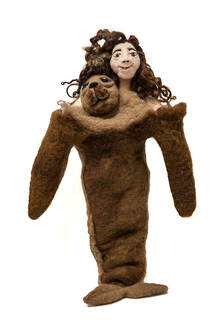 In a way our discomfort makes sense, given the world we live in… Our work environments, our cities, our political worlds are designed in a way that take us far from our true nature. Unlike the snake or the turtle whose new shells inevitably do grow back, we are more like the mythical selkie, half seal/half woman that Sharon Blackie describes in her wonderful book, If Women Rose Rooted. The selkie is tricked by a lonely fisherman, who steals her seal skin, into coming to live with him. He promises to return her skin after seven years, but, at the time of its promised return, the skin has disintegrated, making it impossible for her to ever return to her true home under the sea. Just like the selkie we are left cut off from our true home, vulnerable and afraid. It is only at this point of hopelessness that we may be ready to consider looking at our shadows. Shadow work is difficult work, and we are drawn to it only when we sense intuitively that it has become a necessity. A matter of life or death. Even if is “only” soul death that we are talking about. On the shadow path “Luckily” this new path we are on is dark and shadowy. We can only see a few feet ahead of us or maybe even just one tiny baby step. But this darkness makes it easier to see the shadows. In this darkness we can see and hear clearly that which was obstructed by the bright shininess of the familiar. In taking a look at our shadows, our fears, our discomforts, the things we can’t bear, we can begin to grow ourselves a new skin or shell that fits us much better, that allows for more of who we really are. And more on my own shadow journey…
Within a few months, I had left that nursing home job to find another position as art therapist at an Alzheimer’s center in Brooklyn, and then three moves, various art therapy jobs and two children later, I found my way to doll-making and the Transformative Healing Dolls, but that is another story…. Where I got the inspiration for this story of shedding skins…. I got the idea for this version of a shedding skin story (a central metaphor in my work if you have been following me for a while) from Sharon Blackie’s book, If Women Rose Rooted: A Journey to Authenticity and Belonging and the story on page 73 called “The Selkie’s New Skin” in the chapter called Islands of the Heart: Embracing the Call. I highly recommend this book. I have also been fascinated with selkie’s and I made a selkie doll towards the beginning of my doll-making journey and she still holds a great deal of meaning for me. Symbols and symbolic language-developing your own personal language Symbols and symbolic language has always intrigued me. When I was an art therapist, I tried to understand the symbols in the art of the troubled children I worked with. Struggling with painful realities and often unable to process what they were going through, these children found ways to express and release their troubles through their art. There were a lot of sports figures (the Chicago Bulls logo featured heavily) and many representations of Sadaam Hussein, standing in symbolically to respectively represent good and evil in their drawings, paintings and sculptures. Sometimes, their imagery veered into imaginary territory, with fantastical animals and dream-like landscapes. My interest in symbolism goes way before my years as an art therapist. When I was little, I remember I once had what felt like an auspicious dream. In a beautiful mountainous landscape I saw a strange, huge set of runes (symbolic language) in the sky. It felt eerie and full of portent but I didn't understand it. This dream stayed with me for a long time, but I never could figure out what it meant. I still don't know what it meant and I wish I could remember it well enough now to look it up. The more I get familiar with my own art, I can see that most of the symbols are the same ones recurring again and again. No more symbols hanging in the sky but I'm always interested to see what new symbols show up. Harkening back to a pre-verbal time, a time of symbolism and deep meaning One of the things that intrigues me most about symbolic language is that it harkens back to a time when nature and the world around was felt to have deep meaning that affected the daily lives of those who felt themselves deeply connected to nature. Too long, our culture has denigrated societies that still have connection to this rich symbolic well of meaning, such as Native Americans, and the indigenous populations of places such as the Northwest of the Americas, ie: Canada and Alaska and Australia and New Zealand. And of course, cultures like the Celts. What would it be like to reconnect to a time when we as humans had a direct experience of the spiritual world, a world where we could hear plants and animals talking to us and guiding us through our days? A world when everything was truly alive. 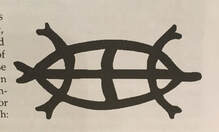 Animal symbolism Bears, snakes, turtles, the “Green Man,” elephants. These are a few of the symbols that have shown up frequently in my paintings and dolls. Some of these are very powerful and show up not just in my art but in my life in general. For instance-the turtle has been with me for a long time. I have long been drawn to the turtle and turtles have shown up in my dreams and in my art. My home altar is full of turtles. I'm most drawn to sea turtles for their ability to travel in land and water and to survive long distances and to dive deep into murky waters. According to the book, Animal Speak: the Spiritual and Magical Powers of Creatures Great and Small, among many other things, "the turtle was an animal whose magic could help you unite heaven and earth within your own life." (see symbol above.) I love being able to discover new facets of the same symbol over time. Some newer symbols in my work are the giraffes, a white goat/sheep and a green bird. In the images below are some examples of these newer symbols as they show up in my paintings. The giraffe, in the first two images, has a feeling of protectiveness to me. These first two images have a lot more going on in them, including the made up symbolic language in the first one, similar to what I describe below. According to Animal Speak, "the (giraffe's) long neck..makes it a powerful totem for farsightedness and for seeing what lies on the horizon for you." Hmmm? The white goat in the second two images suggests to me, the ability to navigate difficult terrain but there is also a playfulness to it. And the green bird, in the last two images has a feeling of magic and protection. In both images, the green is balanced with purple-colors have important meaning as well. To me, green has to do with life and life energy and purple is associated with magic. From reading these brief descriptions of my response to some of the symbolism in my work, you can get a sense of how individualized their meanings can be. And, as I said, the meanings can change and morph over time, even within the same image. Sometimes I look back on an old image or doll and new meanings emerge that I didn't see at first. Hand of Mysteries Recently I have been working on a series of talisman dolls. The image at the top of this article is a detail of one of my dolls from this series. I intend to make eight over time. I'll be writing more about these in a future post. These are also inspiration for the Maiden, Mother, Crone, Death course that I am offering, starting in March. Each of the dolls starts from the same two sided soft sculpture flip doll pattern, but each time I am led in very different directions in the way I create them. For one of the dolls, I used as inspiration an image of a sculpture of a hand with little figures on each finger, that I saw in the Sackler Museum here in DC. This sculpture intrigued me but I didn’t know what I wanted to do with it. Later, in researching this symbol of a hand with little saints on each finger, I found this Mexican painting called "Mano Poderosa," and was intrigued by the similarities. I then found a different image of a hand with mysterious alchemical symbols on each finger, called the "Hand of Mystery." I’m not sure if these two are related but for my doll, I combined the two. I wasn’t so much concerned with the “true” meaning of the symbol. I just liked the idea of these mysterious symbols. For this blog post, I tried to look up the meaning of the alchemical symbols and was only able to find three of them. Salt, nitrogen, sal ammoniac. What I was able to figure out was that these were various elements that would have been used in an alchemical process to create the transformation required. And I learned that the “hand of mysteries” with its additional symbols of a key, lantern, sun, star and crown had to do with a series of steps that helped to transform human into divine. It turned out that this fit with the theme of my doll. I enjoy the way in which the symbols that occur in my art can be woven into mysterious images from the past. Discovering new meanings in this way, I am able to deepen the meanings of my dolls and paintings. 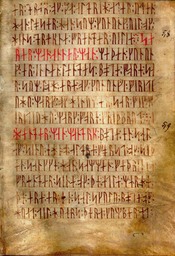 Viking Runes Viking Runes Some examples of runes, sigils and other symbolic languages There are many sources for symbolic language that can be used as inspiration in your art. Sometimes I just make them up too, in the way that I remember making up languages as a child. And my children did this too. Did you do this as a child? I want to be respectful of the origins of these words and at the same time honor them in my own creations. The image to the left is of Viking runes. Runes are an alphabet that can be adapted for magical purposes. Sigils are created specifically for their magical purposes. As I mentioned, you can use ones that you find in any brief review on the internet or you can make up your own. I am just skimming over the top of a very detailed and complicated subject but I encourage you to do your own research if you are interested. Ancient goddess bodies as symbols and source Take a look at these original sculptures of goddesses from ancient times. In the wonderful book, Way of the Rose: The Radical Path of the Divine Feminine Hidden in the Rosary, the authors describe how these ancient goddess sculptures were usually quite small. Instead of meant for display, the were intended to be held in the hand, carried as talisman of support and protection, just as now, many carry the rosary in their hands for comfort and protection. This reminds me of the story that recently came out in the New York Times, that contrary to what had been previously been assumed, it was not men who created most of the cave paintings that have been discovered in places like France and Greece. It turns out that more than half of these paintings were created by women. I am not sure how they were able to figure this out, but what an amazing discovery. To me, it confirms the idea that early, preverbal societies were matriarchal and mostly peaceful. And that instead of focusing on war and struggle, the paintings they created were about mothers and babies (animal and human), representations of nature and of a mother goddess. These sculptures with their earthy and simple shapes could also be an inspiration for you to create a symbol of nurturance and protection. They also serve as an antidote to the overly skinny models of feminine figures that are forced upon us in modern society. Some links to artist friends whose use of symbolism in their art inspire me
I wanted to end with sharing some links to art by friends of mine. Sometimes I am so amazed at the people I know and am inspired by. When you look at their art and imagery, consider what symbolic language they are using. What can you notice about their symbolic language? What is revealed/concealed? Julie Dziekiewitz, makes encaustic paintings that speak out for women's rights. Her large wax paintings are colorful and engaging and full of meaningful symbols, both political and personal. Look for the different ways sharks show up in her paintings. Sybil Archibald I've written about Sybil before but if you haven't already taken a look at her work, please do go and look. Her paintings and sculptures and most recently monotypes, are rich with personal spiritual symbolism. She is working on a book about her monotypes that will expand on the meanings of their symbols. Pauline Siple, another artist friend from my Torpedo Factory days, has recently added to her repertoire of evocative paintings to add soft sculptures. These playful figures and paintings speak to themes that interest her and reflect stories of her life. Polly Sonic/Linda Wingerter, I've known since my New Haven days. Her puppetry, (one of many creative talents, including children's book illustration) continue to amaze me. She is infinitely inventive and creative-take a look. Living a Life Attuned.... In preparing for an upcoming course, entitled Maiden, Mother Crone, Death, I added the word death, because it seemed important, even though a part of me was strongly resisting adding this word. In this post, I want to share some of my thoughts about how death fits in with the cycles of a woman's life from maiden to mother to crone. Several years ago, a close friend of mine who is more comfortable with thoughts of death than most people I know, (she meditates often on her own death in a yoga "corpse meditation") recommended an app called “We Croak.” This app reminds us that we are going to die someday, with five times a day messages that are less about death and more about the preciousness of life. Since then, I have come to appreciate these reminders throughout my day. For instance, I just got this message on the app: Even when the plum has wilted and the winter has reached its deepest cold, do not let your body be numb or your mind absent. Dōgen Zenji. This post is meant to be an introduction to a way of viewing death, rooted in the worldview of our deep ancestors. If this (within the context of the feminine divine) interests you, I share a list of books for further exploration below. What if we see death the way our paleolitihic ancestors viewed it, as a welcome stage in a life lived in relationship to a greater whole? In this way, rather than cut off from each other, from the divine and from nature, we are profoundly connected to the web of life. A couple of caveats: One: if death itself feels too scary to think about, consider the many smaller "deaths" that we experience throughout our lives as we let go of experiences, abilities, loved ones, as part of the inevitable changes of life. Two: you don't have to be a mother to experience the "mother" part of the maiden, mother crone cycles of life. We are all mothers to ourselves, to our friends and even sometimes to those we happen to meet in the course of our days. Our Culture’s Negative View of Death as the “Grim Reaper” When you think about death, do those scary archetypes in our culture come to mind? If you ever watched a horror movie, or even if you have paid any attention to popular culture, you would have come across the archetype of death as the “Grim Reaper.” There is an older, Celtic, version of this scary character, occurring also in other cultures, a horrifying-looking monster with a black cape and carrying a scythe, and called “Ankou.” “Ankou,” the lord of death, ferries people who have died to their life beyond. He sometimes pushes a cart and his eyes are holes filled with fire. He is terrifying and yet he serves primarily as a guide and messenger, not someone who is here to punish you for your sins in life. A general word for someone who guides you into the land of death is a psychopomp. What is a psychopomp? The definition of psychopomp in Wikipedia is, “creatures, spirits, angels or deities in many religions, whose responsibility is to guide newly deceased souls to the afterlife. Their role is not to judge the deceased, but to guide them.” This definition goes on to describe a list of male deities from various cultures and religions whose roles may be seen as psychopomps. These include: Egyptian Anubis, Hindu Yama, Greek ferryman Charon, and the god Hermes, Roman God, Mercury. In Christianity, Saint Peter, Archangel Michael and Jesus can be seen as psychopomps. In addition to these better known male psychopomps, I would also like to consider some female psychopomps, some of whom are better known in their other roles. 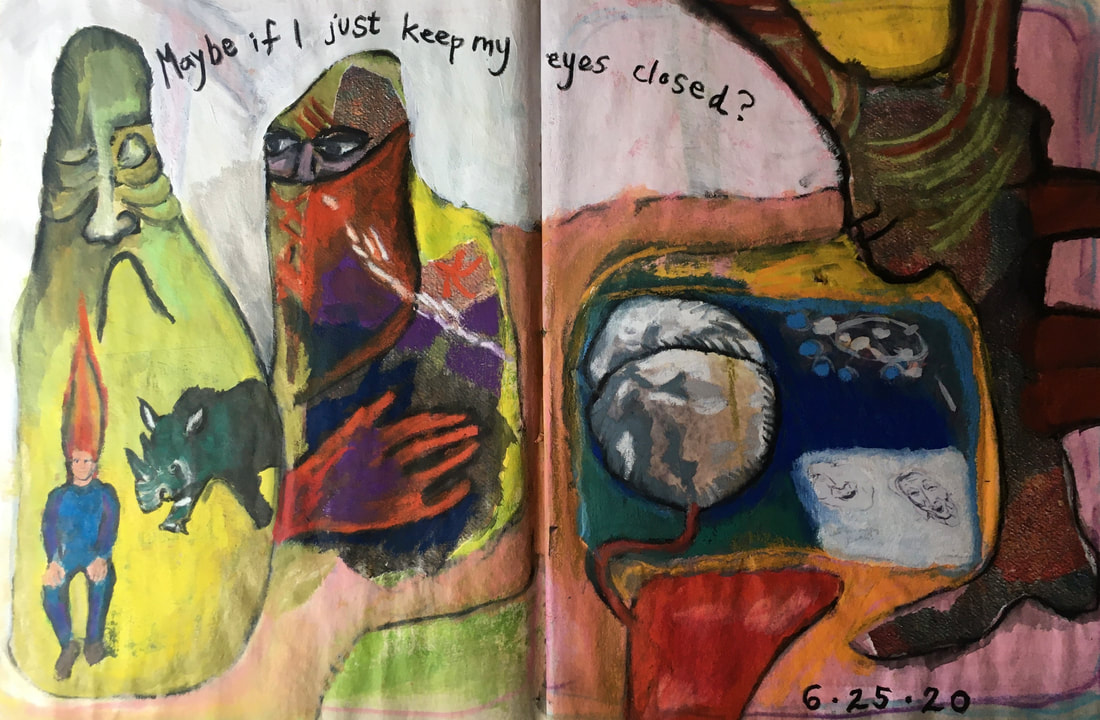 Maybe if I just kept my eyes closed? Collage, goauche and watercolor pencils in handmade book Maybe if I just kept my eyes closed? Collage, goauche and watercolor pencils in handmade book The need for psychopomps only occurred when death became scary and separate... In a wonderful book, The Myth of the Goddess: Evolution of an Image, the authors make the point that in a time when our ancestors worshipped a nurturing Mother Goddess (tracing back to the paleolithic era,) they didn't have the fear of death that we experience now. This was a time, 20,000 years ago and more, when "human beings experienced themselves as the children of Nature, in relationship with all things, part of the whole." Living deep in caves that represented the womb of this mother goddess, "with death, they would have felt that they were taken back into the dark womb of the Mother and believed they would be reborn like the moon." (p 19 The Myth of the Goddess.) This view persisted through the following Neolithic era (10,000 to 5500 BC) and it wasn't until the Bronze age (3500 to 1250 BC) that the worlds of life and death became so separate that it was believed that a guide was necessary to transition from one world to the other. Not surprisingly this transition also occurred at the same time as the introduction of weapons of war, with the invasion of "migratory warrior tribesmen who imposed their mythology and patriarchal customs on the agricultural peoples whose territory they invaded..we are in the presence of the Indo-European (Ayran) and semitic inheritance. (p 155, The Myth of the Goddess.) As our existence became more and more separated from nature, from the divine and from a sense of connectedness with each other, death also became more scary. And in more recent history, even the psychopomps themselves became scary and threatening. Divine feminine Psychopomps What if the psychopomp, instead of being a terrifying dark monster holding a scythe, were someone who holds our hand? What if she were a loving guide? In Greek mythology there is Hecate, who I discussed in another blog post and who is known for guiding women at crucial life crossroads, and certainly death is one of these. In Greek and Roman mythology, Hecate guides Demeter, the mother goddess, also in charge of agriculture and growth, to find her daughter, Persephone, in the underworld. This is one of many stories of goddesses searching the underworld for lost loved ones. This story has many layers of meaning, but on one level it was seen as a metaphor for the change of seasons. During the times that Persephone is above ground, Demeter allows the sun to shine and crops to grow, and when Persephone is below ground, winter comes and growth stops. There is still a sense of connectedness to nature and to cycles of life. Mary, known in the Catholic faith among many other names, as "mother of God", can be seen as a psychopomp in her guise as the Queen of the Underworld. In this role, she is also deeply connected to the earth, to the soil, to the cycles of life. In this way, she fits into a framework of the psychopomp as a guide and companion to the underworld, that is part of a cycle of death and rebirth. Rather than a punishing and terrifying monster, such as the Grim Reaper, she holds us in her arms. Journey into Death as a Metaphor for Spiritual Integration Jumping back into time, another version of a psychopomp is the Sumerian goddess, Inanna, who in the poem The Descent of Inanna, makes her way into the realm of her sister, Ereshkigal. An interesting dimension to her story is that she has to shed a layer at each stage of the journey to the underworld. The layers that she removes include, her crown, earrings, breast decorations, girdle, and skirt. These outer adornments each correspond to a chakra in the body, from the crown chakra, on down to the sacral chakra. In this way, her journey can be interpreted as a metaphor for a deepening of spiritual integration. As Inanna descends to meet her sister, who in this story serves as Queen of the Dead, she sheds layers of her outward identity and reveals her innermost soul. In some ways, Inanna and Ereshkigal can be seen as two sides of one identity, light and dark, upper and lower, goddess of the upper world and goddess of the lower world. Delving into Our Inner Dimensions
In the realm of psychology, Jung describes the psychopomp as the mediator between conscious and unconscious. The connection here is with death as a metaphor for the formlessness of the inner life of dreams and the imagination. Just as we need a guide to assist us in our final journey, we also need a guide to assist us in navigating the threshold between our imagination and our waking lives. In living fully, we are healthiest when we have a balance of the two. Jung saw our psyche as divided into a consciousness above the line and the unconscious below. Within the unconscious live all kinds of collective archetypes, symbolic representations of various spiritual and emotional aspects of who we are collectively as human beings. His definition of healthy aging had to do with an integration, a coming together of all those disparate parts. And in order to do that, we need a guide to help us navigate between these worlds. We can find this inner guide in dreams, in the creative process (writing, art, poetry) and in living creatively and fully. How does this matter in our daily lives? Questions that come up when we reflect on these ideas are many. How do we mediate our own unconscious worlds, our own psyches? What happens when we embrace the feminine archetypes for psychopomps, rather than the often ferocious or warlike male figures? I've been hearing more often lately about people who are living a "normal" life but who suddenly experience a spiritual awakening. What's this about? Does this say something about a sea change in the way people are navigating their lives? It feels like the veil that used to separate our "average" day-to-day life from what's bubbling underneath is getting thinner. Things are changing fast and in a way that isn't a moment too soon. Our crazy world needs us to be connected to all of what is available to us, to our inner lives, to our spiritual lives, to nature and to our ancestors, in order to meet the challenges that are facing us today. It behooves us to tune into and welcome a more integrated view of the full spectrum of human existence, one which integrates the whole spectrum of life and death and rebirth, rather than fearing death as a representation of the dark/unknown. No matter where you are in terms of your beliefs about these things, I hope that this article piqued your imagination for further exploration. Books to read: Here are a few books to explore some of these ideas further… The Heroine with 1,001 Faces, Maria Tatar Longing for Darkness: Tara and the Black Madonna, China Galland The Crone: Woman of Age, Wisdom and Power by Barbara G. Walker Cassandra Speaks: When Women are the Storytellers the Human Story Changes by Elizabeth Lesser The Myth of the Goddess: Evolution of an Image by Ann Baring and Jules Cashford And I’m really looking forward to this one coming out soon: Hagitude: Reimagining the Second Half of Life, Sharon Blackie Finding a new way of tracking time I’d like to nominate the three-faced Roman Goddess, Hecate as a replacement for the two-faced God, Janus, as a symbol of the transition into the new year. Janus, the origin of our word, January, looks forward and back in a linear way, to the past and future. But Hecate adds the dimensions of up and down. As do many of the feminine divine, Hecate has a more complex relationship to time. Hecate’s ability to move through time is layered. She represents a web of time with no real beginning and end but instead a cycle that spirals back on itself and returns again. In this way, she captures more accurately our true experience of time, always circling back to the past and projecting forward into the future, integrating all the selves we once were and are meant to be. More about Hecate Hecate also symbolizes crossroads and portals. Her three faces, sometimes seen as a dog, serpent and horse, all originally had associations with the underworld. She protects women through life transitions, from childhood to womanhood, to marriage, to pregnancy and childbirth. Among her symbols are keys, torches and portals. One of Hecate’s best-known roles was to use her torch to guide Demeter down to the underworld to find her daughter, Persephone, who had been abducted by the lord of the underworld. Hecate, though a goddess of the darkness, is also a light-bringer. Using her key to open the door (portal) to the underworld, Hecate then guided Persephone back out of the underworld. Hecate is a very complex goddess, that would take much longer than one blog post to fully describe. But what I am trying to capture here is her ability to navigate space and time in a way that we can greatly benefit from if we want to disengage from a surface-oriented relationship with time and space. A few examples of my non-linear calendars with tracking joy Non-linear calendars, circles, spirals and infinity loops Why would we want to disengage from time and space in this way? Doesn’t this sound kind of wacky? Maybe on some level yes, but on another level, there is a freedom in letting go of a linear, goal-oriented narrative of life. I used to write goals at the end of the year and the beginning of a new one. I would plan what I was hoping to achieve in the new year and tally up what I had achieved in the year before. But it never felt right. It often felt like a set up for frustration and disappointment of expectations. I felt stuck in that linear track of achievement and accomplishment. Then in 2015 or so, I started to track joy in my calendars. I created non-linear calendars-circles, spirals, and infinity loops, one for each month. And I used symbols or colors to track how much joy I had experienced in a given day or month. I gradually stopped making these calendars but they had an impact on me and influence the way I think about my intentions today. Now I think about intentions in a more flexible way, allowing for change and adjustments along the way. Rather than setting goals, with their association to outward structures and achievements, I set intentions, just one or two, that have more to do with how I want to feel in the coming year and who I want to be. Ancient goddesses as portals What happens when we use goddesses like Hecate to open up a new portal into our relationship with time? She opens us up to a world beneath the surface of linear time. She helps us to see a doorway, where we may only see a wall. She opens us up into a new way of seeing our path ahead. She opens us up to overlapping dimensions of time. We may, in encountering one of her portals, find ourselves suddenly in contact with our deep ancestors, whose wisdom we might need at that moment. Or, we may open a door into the future, gaining a goosebump-inducing glimpse of who we might or could be, if we lived out our best intentions. Life becomes more messy and chaotic this way, but more connected to the present moment. One of my mentors, Sally Kempton, in her book, Meditation for the Love of it: Enjoying Your Own Deepest Experience, talks of the potential for any experience, especially those with a sensual dimension, to be a portal to the divine. In reflecting on the ‘tree-ness” of trees or in stopping to fully experience the taste of a strawberry for instance, we can drop into a deeper sense of our rootedness to all beings. Or in looking into our children’s faces, we can see the echo of our great-ancestors, speaking to us from the past. Portals to joy, Hildegarde of Bingen and “greenness” I’m reminded too of Hildegarde of Bingen, a mystic who lived at the turn of the first millennium, in a time that in some ways was much like ours. Her joyful vision of life centered on the idea that to be awake is to be “filled with greenness.” To her, every being on earth, not just humans, could potentially be filled with a spark of life, “for no creature exists that lacks a radiance, be it greenness or seed, buds or beauty…otherwise it would not be a creation at all.” (p. 67 Matthew Fox, Illuminations of Hildegard of Bingen.) Each element of our living earth is a potential portal into aliveness and gives us an opportunity to experience our fullness and divinity. The mystics, poets and artists of the world remind us of this connection and yet we are each capable of experiencing it ourselves if we open ourselves to it. The ancient goddesses such as Hecate live in all of us, as potential to our fullest, most joyful and alive selves. “The real voyage consists not in seeking new landscapes but having new eyes.” Marcel Proust The Room in Which We are Every Age At Once
by Naomi Shihab Nye (from Honeybee) As if there were a home in the air around us from birth, spaciousness bidding us enter, we live inside the long story of time. And it was language giving us bearing, letting in light. When I was 3, rimming pink above rooftops, Grandpa planted a redbud tree that would bloom for years beyond us. Each year it would say spring first. Vocabulary falling into place, we were always old and young feeling familiar lines resound, my favorite Margaret Wise Brown, who died right before I was born, and precious solitary Emily D., the words of all time waiting, latched together like small huts, stories of wise animals and human beings rising up inside us to shelter our days. The messy lineage of the Fierce Feminine For the last couple months, in preparation for an on-line class I am teaching this Spring, I have been immersing myself in myths, fairy tales and lore related to the messy lineage of the fierce feminine. During my lifetime, the last 60 years or so, there has been more interest in the stories of the feminine divine hidden within the patriarchal world religions. There are many books about the feminine face of God written in the past 60 years. These books tell of fierce dark goddesses who were connected to the earth and its rhythms. Yet, sometimes I feel a resistance in myself about embracing these stories. Is it that they sound too “woo woo?” Am I afraid of appearing too “out there” myself? Still, another part of me feels in my bones a connection to these powerful archetypes. And this part of me feels that it is worth taking the risk of embracing the fierce feminine, no matter how foolish or New Agey it might make me appear. The Crone and the Un-nesting instinct For instance, the crone has something to say about an experience that many of us begin to have as mid to late middle-aged women. Our culture speaks often of the nesting instinct of women, our wish to have children and to procreate, our wish to create a home, to nurture those in our care, and to sacrifice our needs for them. But you don’t hear much about the “un-nesting instinct” that comes later in life and that the crone archetype represents so well. At the time of the crone, we take apart our nests, jettisoning all that we no longer need in our lives. This feels necessary and scary at the same time. We are still mothers and yet, our responsibilities have changed. Instead of focusing on those in our care, we turn inward to the riches of our inner world, riches accumulated after years of experiences of caring for others and contributing to society. Now it is time to shed layers of experience, of roles and of expectations and time to begin to live truly for oneself. This can feel kind of uncomfortable and awkward. The famous poem, Warning, that starts, “When I am an old woman, I shall wear purple…” speaks to this instinct to shed all the unnecessary baggage of our lives lived for others, and begin to turn to our true soul identity. The end of the year, with the coming of winter and the solstice can be a good time to meditate on meanings of coming into crone-hood, whether we are fully in the midst of it now, or whether it is an experience far in our future. Because, none of these faces of the divine feminine exist in isolation. Instead, the maiden, mother, crone and death are usually seen as faces of the same central figure. The turning of the year, hope of light at the coming of the dark The winter solstice is the time of year that corresponds with mid to late middle age for women. Along with the coming of winter, this time is celebrated in all the world religions in a similar way, as a time of hoping of light in the midst of darkness. At this time of year, we release what is no longer needed from the previous year. The element associated with this time of year is earth and the direction is north. The crone is strongly associated with the earth and the darkness of the northern climate. She is dark, elemental, and grounded-in-the earth. One such figure is the Dark Madonna, (a dark-skinned representation of the Virgin Mary, often seen as an advocate for the poor and underserved.) She has roots in earlier figures such as Tiamet (Babylonia), Europa (Greek and Roman), Cerridwen/Caillech, the Morrigan, (Celtic) Kali or Durga, (Hindu) and in Eastern European fairy tales, Baba Yaga. Who were these ancient feminine figures? All of these powerful crone-like figures derived energy from the earth itself. They were wild souls, free from constraints of a structured existence. Turning away from society’s norms, they turned towards the healing darkness of the forests, of under the ocean, of caves and of under the earth, where the dark soil rejuvenated itself for the growth of another year. They connected also to the plants and animals that hid themselves in the dark woods and knew how to source their potions and remedies from these places. Stones too were sources of power, not just for the protective qualities of stone caves but also the power contained within the stones themselves. So much mystery here, things we don’t know. Ancient goddesses who in fact, were the earth I mentioned a wide range of seemingly disconnected ancient goddesses above. Some, like Tiamet and Europa were themselves the body of the earth. In ancient stories, it was told that the bodies of these goddesses were torn apart to make the mountains, valleys and waters of the earth. They were in fact, the earth. Instead of an association with the celestial bodies, as their more celebrated male counterparts, they were rooted in the earth and grounded in the cycles of the seasons. Many of their stories had to do with the ways in which they had the power to bring or withhold the warmth of spring and summer. One such story is the Greek and Roman goddess Persephone whose banishment to the underworld for six months out of the year meant the coming of darkness and winter. Where did they go? What is my point in moshing all these various ancient figures together? I am not claiming in any way to be an accurate religious scholar or historian. For those of you more steeped in knowledge of the ancient goddesses, please forgive my inexactitude, in exchange for my enthusiasm. What I am alluding to is the truth that we as women all know in our bones, but was not reinforced in the world around us. Instead, this feminine form of the divine was for centuries strenuously denied and rejected by what Clarissa Pinkola Estes calls the “over-culture.” In the over-culture, a male dominated, hierarchical divine force perpetuated violence, greed and hierarchy. This force destroyed and is destroying the earth under our feet in order to meet its relentless needs. Its hierarchical order was imposed from without. Unfortunately, this is the world we live in today, a world that is most likely to destroy itself in the not-too-distant future. We know in our bodies that there is more than this. Our yearning for a more cyclical, nurturing, regenerating way of living is our turning towards the crone, not only for us as individuals, but also for our planet. Baba Yaga, one of my favorite crone stories One of my favorite figures of the crone archetype of the dark feminine is Baba Yaga, from Eastern European folk tales. I can’t presume to be able to describe her many guises because there are so many stories about her, and they originated from oral narratives. But she represents to me the way in which the crone holds such rich inspiration for us as women. She carries within her some of the elements most common to the crone archetype. She lives in a way that is one with the forces of nature around her and derives strength from nature, rejecting the norms imposed on women, especially older women, by society. One of her symbols is the cauldron, most often associated with crones, symbol of the ability to gestate, create, dream. She is fierce and feared. She lives far away from “civilized” life. She, like many crone figures, is often demonized and denigrated and yet, for those who are brave enough to meet her, she carries wisdom and truth. An archetypal figure of the crone, Baba Yaga One does not go out and seek Baba Yaga. Rather, you surrender and in your lostness, you come upon her. And it helps if you have the right intentions, if you seek her out of true curiosity and innocence. She immediately senses falseness and greed. In one of my favorite stories about Baba Yaga, the person who finds her is a young girl called “Vasilisa the Brave.” This young girl is sent, in one version of the story, into the forest to get fire from Baba Yaga, by her wicked step-mother, who intends for Vasilisa to be killed. The step-mother wants to get rid of Vasilisa. But luckily, Vasilisa has, in her pocket, a wise doll that had been given to her and blessed by her mother on her deathbed. (Here are also the elements of the maiden, mother and crone in the story all at once) This wise doll is able to guide Vasilisa through her visit with Baba Yaga, so that she knows what to ask, what to do. Impressed with the respect and care with which Vasilisa interacts with her, Baba Yaga doesn’t kill and eat her, but instead, after Vasilisa completes all the tasks she is given, Baba Yaga gives her a skull with magic flames coming out of its eyes. Using this magic flaming skull, Vasilisa vanquishes her step-mother and nasty step sisters. The point is, the fierce feminine is potentially dangerous but if handled with the utmost respect and with some intelligence as well, one can gain great wisdom and power from interacting with her. In her own way, Baba Yaga is still a guide and protector. What is it like to encounter your own inner crone? What permissions do you give yourself when you allow this crone being to come into your consciousness? What is it time to clear out now? If you are inspired, take some time now to reflect on what you are ready to let go of, whether on a physical level, as in clutter, or emotional level, to-do lists that no longer apply, relationships that no longer serve or spiritual level, creating spaciousness for what might want to come in at this time. Release these in a silent meditation, either sitting in a meditative space in your home, or a silent nature walk. The Shortest Day by Susan Cooper
And so the Shortest Day came and the year died And everywhere down the centuries of the snow-white world Came people singing, dancing, To drive the dark away. They lighted candles in the winter trees; They hung their homes with evergreen; They burned beseeching fires all night long To keep the year alive. And when the new year’s sunshine blazed awake They shouted, reveling. Through all the frosty ages you can hear them Echoing behind us—listen! All the long echoes, sing the same delight, This Shortest Day, As promise wakens in the sleeping land: They carol, feast, give thanks, And dearly love their friends, And hope for peace. And now so do we, here, now, This year and every year. Welcome, Yule! One of a series of images interpreting a recent waking dream journey, colored markers 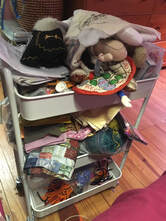 The rolling cart that has been so handy, to allow me to work on dolls and other creative projects while recovering from my ankle injury The rolling cart that has been so handy, to allow me to work on dolls and other creative projects while recovering from my ankle injury I’ve had a lot of time to think lately… Over the past month, I’ve been laid up with a broken ankle and have been forbidden to put any weight on the foot for six weeks after surgery. I had the surgery three weeks ago and am getting closer to being able to walk but I still have a “road” ahead. After the six weeks, there is still the rehabilitation. My husband, other family members and friends have been wonderful in supporting me and helping me to feel accompanied. And I have figured out some ingenious solutions, like having a little rolling cart next to my bed that holds my art and doll making supplies until I can get back into my studio, (which is up two steep flights of stairs so it is going to be a while!) It has been helping me lately to think of this time as a sort of retreat. A chance to reflect, to read, to write and to make small dolls (and teach Befriending Our Shadow IV!). Here is one of the things I have been thinking about, at those times when I get impatient with my limitations and start to expect myself to do a lot more than I am really capable of at the moment. Another drawing in the waking dream series, colored markers Why can it be so hard to listen to inner guidance? Sometimes the simplest truths are the most difficult to take in. For instance, you know how important it is to slow down in order to truly receive inner guidance and yet sometimes it is hard to do this. Maybe it helps to think of an analogy of yourself, your little ego self, steering a boat, the boat of your guidance and Divine self. When things are smooth sailing, no perceived threats on the horizon, you can go on for a long time just fine. But, if, acting in fear of an imaginary danger, you grab the wheel of the boat and yank it all the way over to the other side, you can find yourself spinning in circles. When you forget this simple truth of the need to slow down before changing course, you can find yourself frantically making one wrenching shift in steering after another, in response to fears that are coming at you. Before you know it, you can end up completely lost. Real change starts with very subtle shifts in direction I’ve been thinking a lot about how a very subtle change, a tiny shift in the steering of a boat, is all that is needed to make a dramatic change in overall direction. With that subtle shift, over time your course changes dramatically and you end up in a completely different place than you had originally imagined. And if you are steering a large tanker, the shift is even more dramatic. Just a slight shift in the steering direction and again, the whole course changes. But the bigger the ship, the slower it is to turn. So, it is so very important to slow down this process, to make only the most subtle shifts and then wait. Ancient Bird Spirit Crone, she provides long term guidance, cloth, paper clay and mixed media In alignment with the Divine When you slow down enough to notice, you have the opportunity to change direction mindfully. You and the Divine are aligned. On one level, the Divine is a current that is moving along and that you have no control over. And yet, on another level there is the element of choice, of free will. You are guided by your inner guide, by the Divine, however you want to call it, but you are free to choose whether or not to listen to that guidance. The Divine, in the form of that boat, is moving you along with the current but you are free to grab the wheel and try to fight against it. You are even free to try to sail directly against the current, which takes supreme amounts of energy and force. And sometimes you can get pretty far steering against the current. But it is terribly exhausting and impossible to do if there is a waterfall ahead. A small child steering a grocery cart car Sometimes it can be like the experience of a small child in one of those grocery carts with an attachment for children, that has a little car with its own steering wheel. The mother pushes the cart but the child has the illusion of driving it herself. You are in a situation that you have no control over and yet are imagining you can control. All of your furious efforts have no more effect than of that small child blithely steering the grocery cart, while her mother chooses what direction to go in all along. Your sense of control is an illusion. You and the Divine in tandem Ideally, when you are in alignment internally, you can direct your course in tandem with your guidance, making those small adjustments as you go along and stay in tune with that inner guidance each step of the way. The whole process takes a whole lot less effort and is so much more rewarding in the end. It seems to be the difference between acting out of fear and acting out of attunement. "The Ride on the Big Bear" An image from the book Peterchen's Mondfahrt, (Little Peter's Moon Journey) a book that my mother used to read me and my sisters when I was little and that I realize has inspired my art today. What does this mean in a practical sense? There is so much more mystery and unknown in life than we realize. So much, most really that we have no control over, and that can be terrifying. And yet, we do have power when we can align ourselves with the inner guidance deep within us. How to do this? By slowing down. And how do we slow down? By taking breaths. By noticing what is going on within our bodies. By noticing the synchronicities that are going on around us and that we don’t see unless we slow down. Do you ever have the experience of saying a word or hearing it spoken and then seeing that same word written in front of you? That happens to me all the time. When you start to notice synchronicities more, it is a sign that you are more in tune with inner guidance. That tiny, quiet voice You are always getting messages from the world around you, from nature, from other people, from your body and from that little voice in your head. Not the noisy, yelling, judgmental voice telling you how awful you or someone else is. But that tiny, very quiet, subtle voice that makes gentle suggestions and then waits for you to act on them. For some it is a voice, for others it is a kind of knowing in the body, for others, it is tuning into those signs around them and reading the messages. It is different for everyone. It helps to stop and remember what you already have and what you have already received. And in that stopping to appreciate, you can take a deep breath and slow down. Pushing the river Recently I found myself starting to try to, “push the river,” in response to a sense of internal pressure and frustration that I had not accomplished everything I had set out to do that week. But I was able to stop and instead, take naps, visit with a friend, sketch in my new art journal with markers, or read more in my Harry Potter books in French (I am up to book six! I read a chapter in French and then read the same chapter in English to get what I missed.) Healing is exhausting and I needed those times to rest and recuperate. Instead of berating myself for not getting more done on a new course I am planning, or more stitching done on a series of talisman dolls I am working on, I needed to just rest. So, the subtle steering was to stop and see what was going to be realistic to accomplish in that day. Or week. But more often that day or hour. And to find gradual healing in a way that allows room for rest and self kindness along the way. Inspiration
Here are some other things I have been listening to and reading over the past month and that I recommend highly. These books: The Dance of the Dissident Daughter by Sue Monk Kidd, Traveling with Pomegranates: A Mother Daughter Story by Sue Monk Kidd and Ann Kidd Taylor, Illuminations of Hildegarde of Bingen, Matthew Fox, Travelling While Black: Essays Inspired by Life on the Move, Nanjala Nyabola, The Flowering: The Autobiography of Judy Chicago, Judy Chicago These movies: Love Sarah, The Electrical Life of Louis Wain, Finding Your Feet This series: Lupin This podcast: A Psychic’s Story, Nicole Bigley Red Russian Shaman, stick doll, mixed media, standing, 21 x 13 x 12 2021. I just received notice that this doll, from my most recent crone series, Red Russian Shaman, was accepted into the November Open Show at the Art League in Alexandria, Virginia. The exhibit was curated by Nicola Charles and it will be open from November 10th through December 5th. This is an in-person exhibit. If you are local, you might want to head over to Alexandria, VA to see the exhibit. I'll post again with a link to the actual exhibit when it goes up. I won't be able to make it to see it live, unfortunately because of my broken ankle. I am healing though and hope to be back on my feet in a couple months. NOTE: I have been updating my website, including the gallery and workshops pages. Please take a look and see some of my most recent dolls. And stay tuned for up-coming workshops and other offers. This doll, Bloodlines: Five Generations, from my Ancestor dolls series, was accepted recently into the virtual exhibit, Chasing Ghosts IV: Piercing the Veil through Remembrance, Legacy and Beyond. Curated by Jennifer Gillia Cutshall in the Verum Ultimum Gallery, Portland Oregon, this exhibit features work that, "listens more deeply to the shadow places...or sees a link between grief and hope..or explores memory and melancholy."
This was a wonderful show to be a part of. The curator has made a book of the exhibit, available here. And here is her most recent blog post about the exhibit, where she featured statements by many of the artists in the exhibit. It was an honor to be a part of this show. This doll is about five generations of grandmothers in my family, on my father's side. My father, who died two years ago, is also featured in this doll. My father's mother and the mothers before her, were matriarchs, strong women. Many of them were schoolteachers, some were writers and I wanted to honor them with this doll. The heart inside the doll shows how all the generations are connected. Here is what I said about the doll for the Chasing Ghosts exhibit: "I was immediately drawn to the theme of this exhibit because I always include the shadow in my work. There is no light without shadow, no shadow without light. As living beings (part of this earth), we need the full spectrum from light to dark (and all the colors). We are all connected by the roots and threads that hold us to the earth (with invisible lines). Rather than forgetting, I see the dead as with us always. In my doll, Bloodlines, Five Generations, I pay homage to the grandmothers and to my father. This doll opens up, so that if you open the door, you can see the heart that beats, connecting all the generations, back to the beginning of time. This doll is not meant to represent my ancestors only, but yours too." Please take a look at the exhibit though. There were many wonderful artists. I am not sure which is my favorite. |
ErikaI've been making dolls for about ten years now. I believe that dolls serve as representations and reminders of the best part of ourselves. I am excited to share with you here my learnings about new methods and techniques for doll making and healing. So glad you are here! Categories |
Proudly powered by Weebly


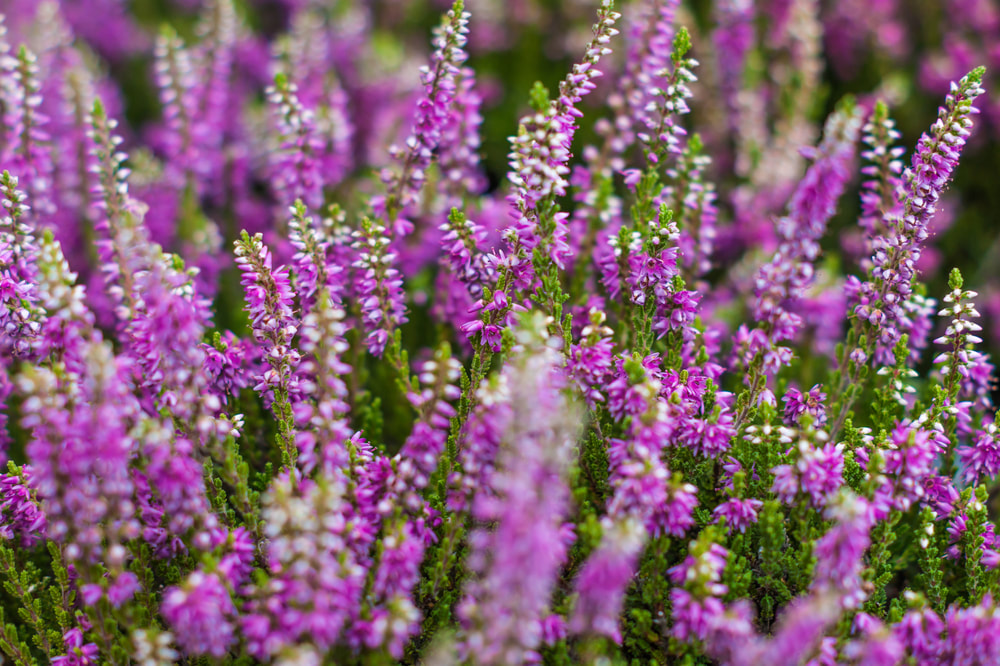
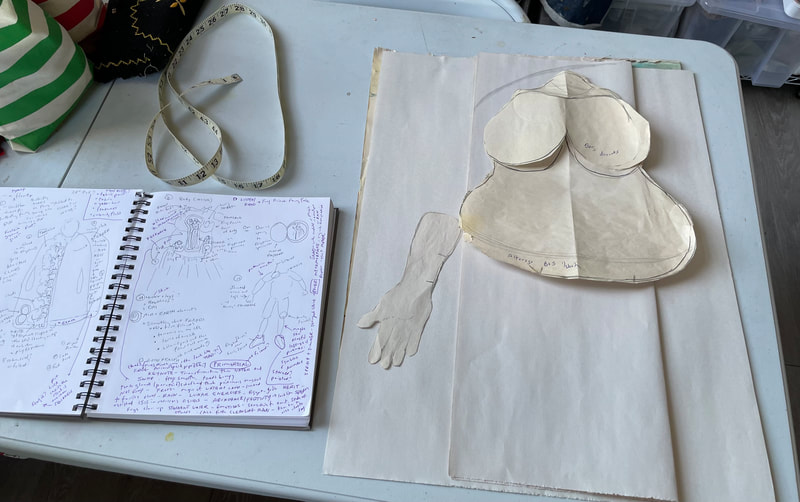
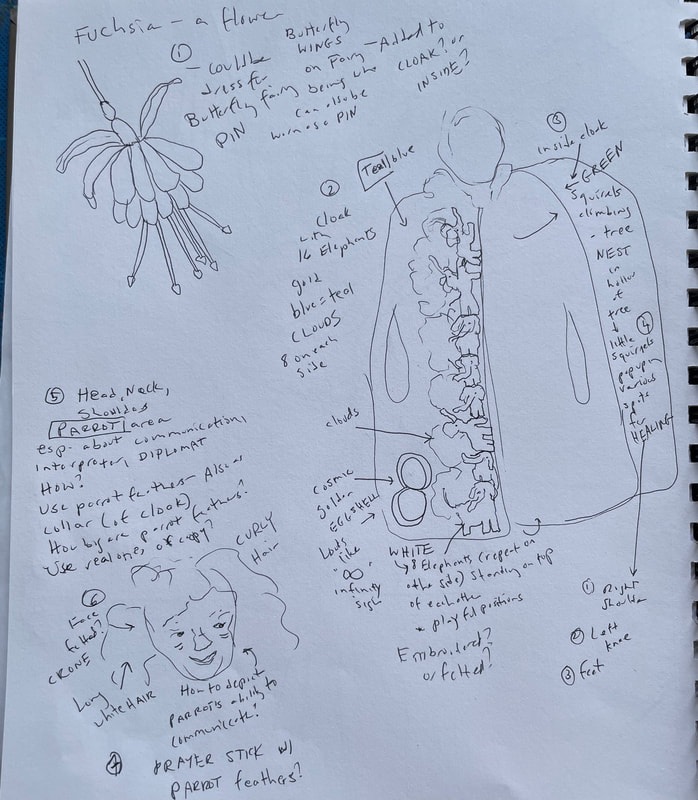
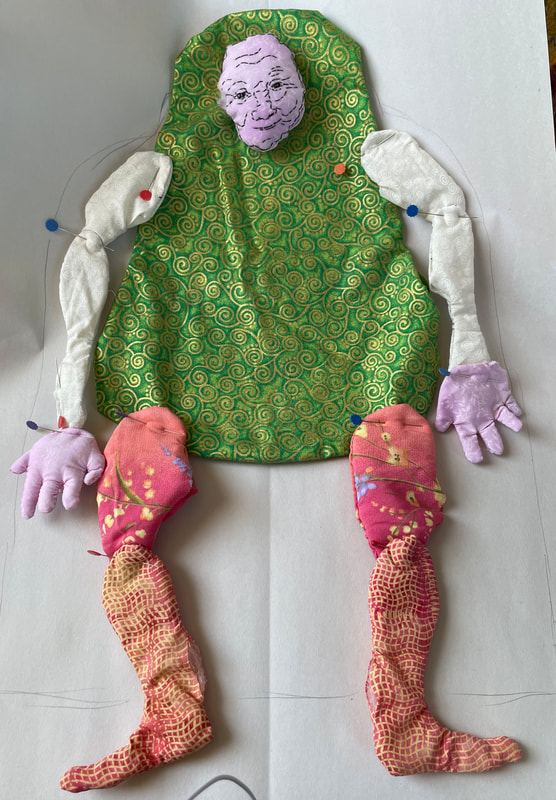
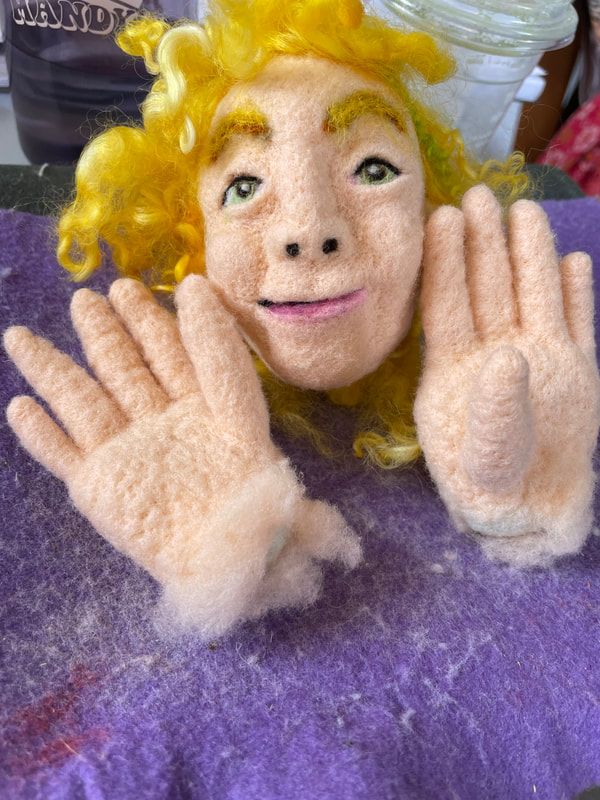
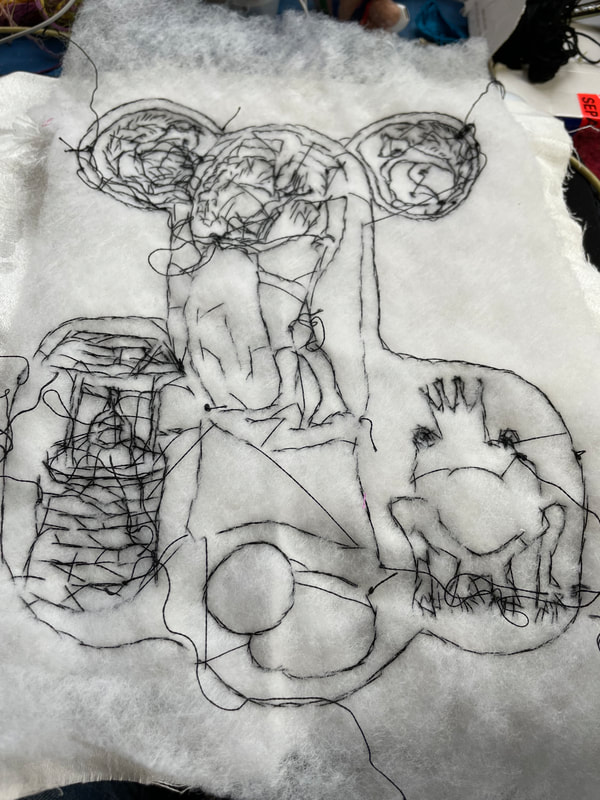
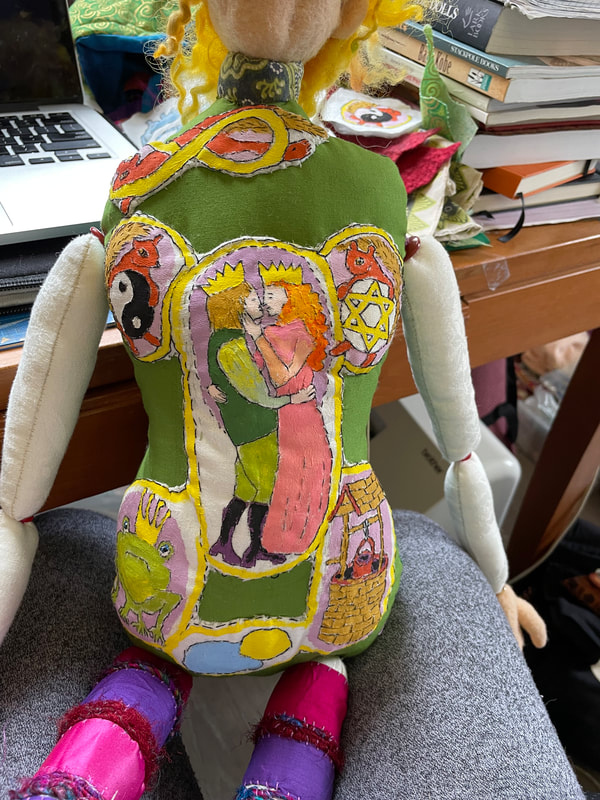
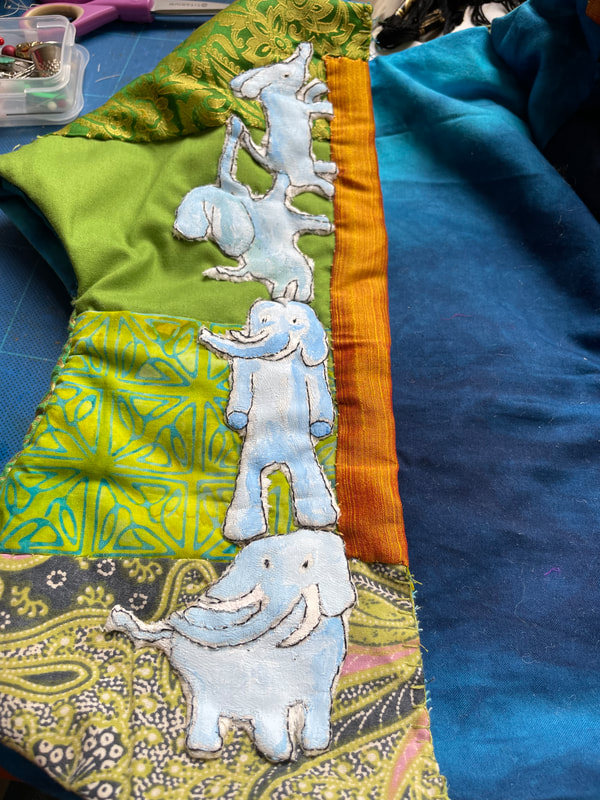
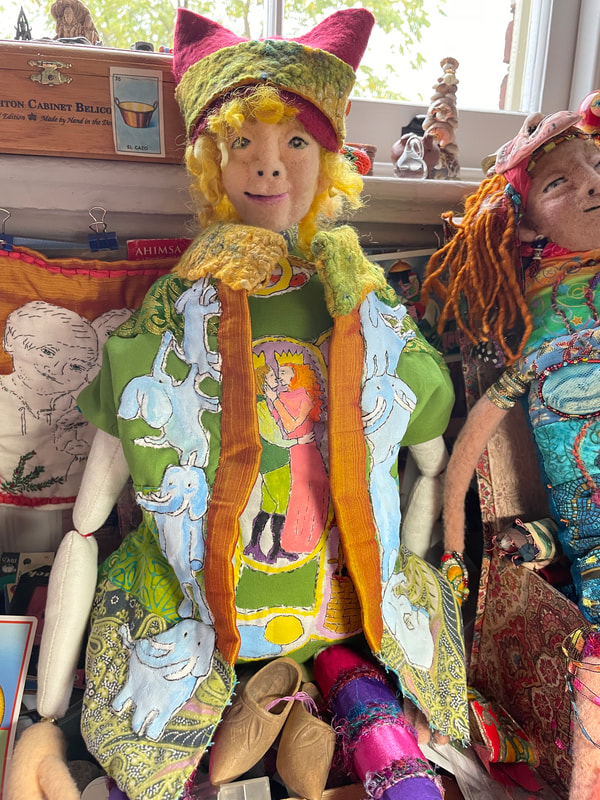
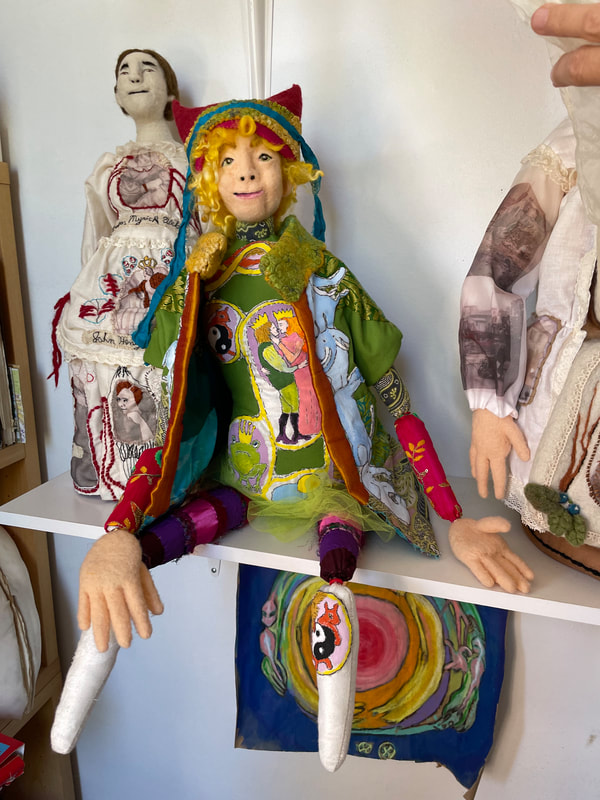
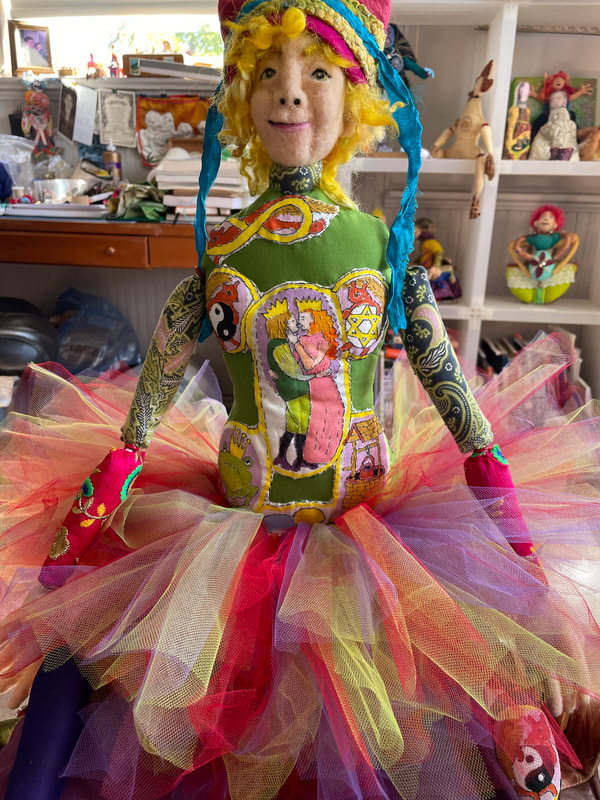
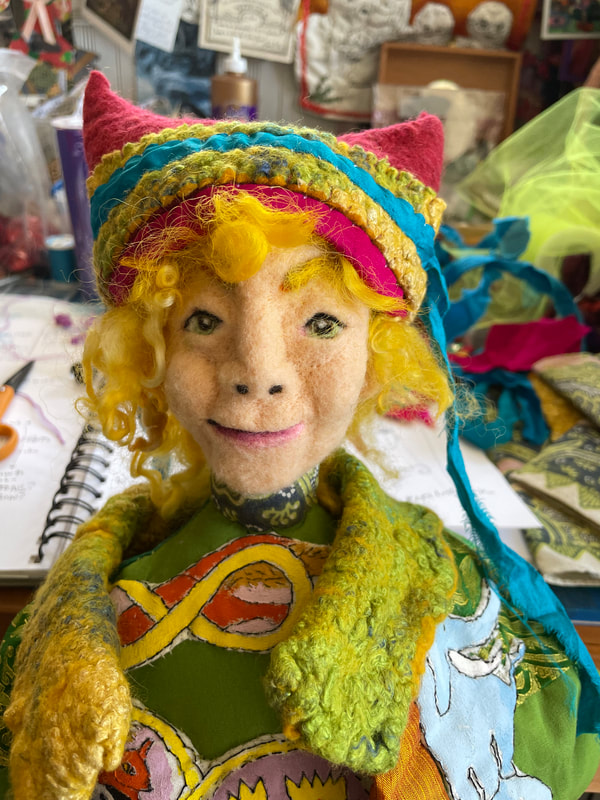
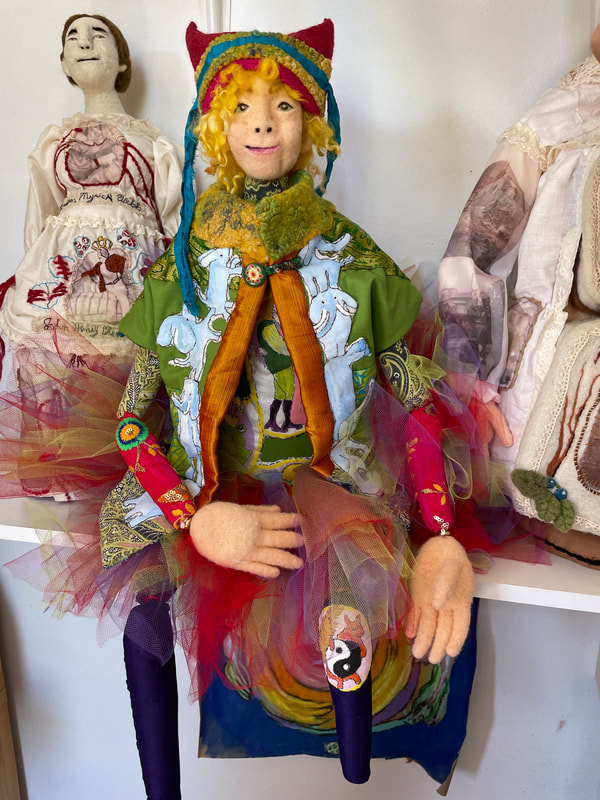
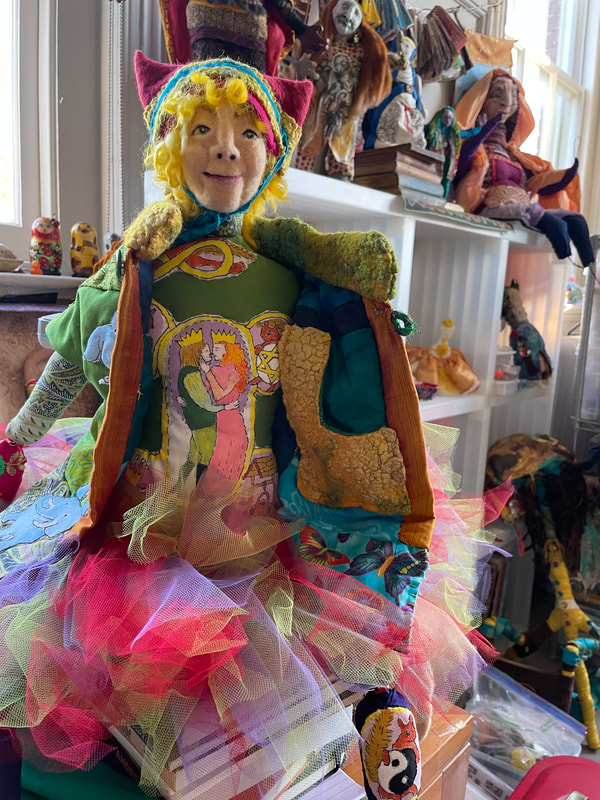
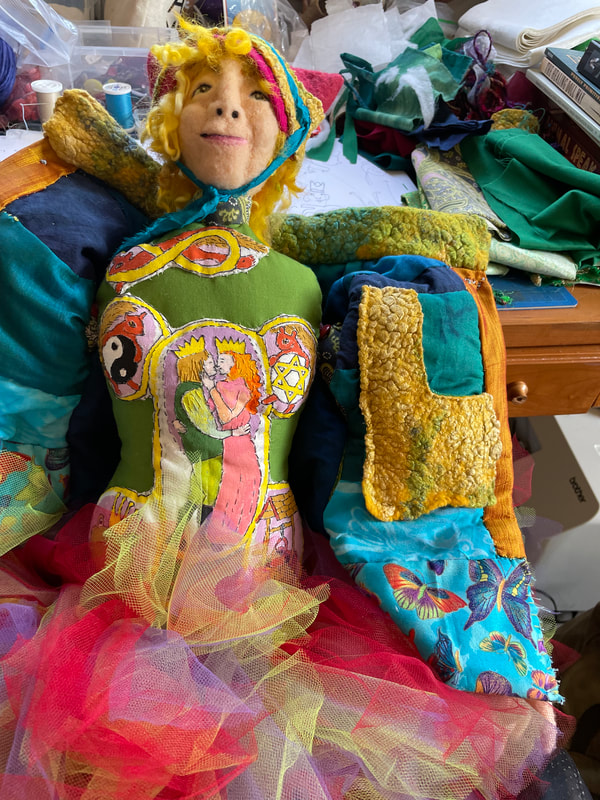
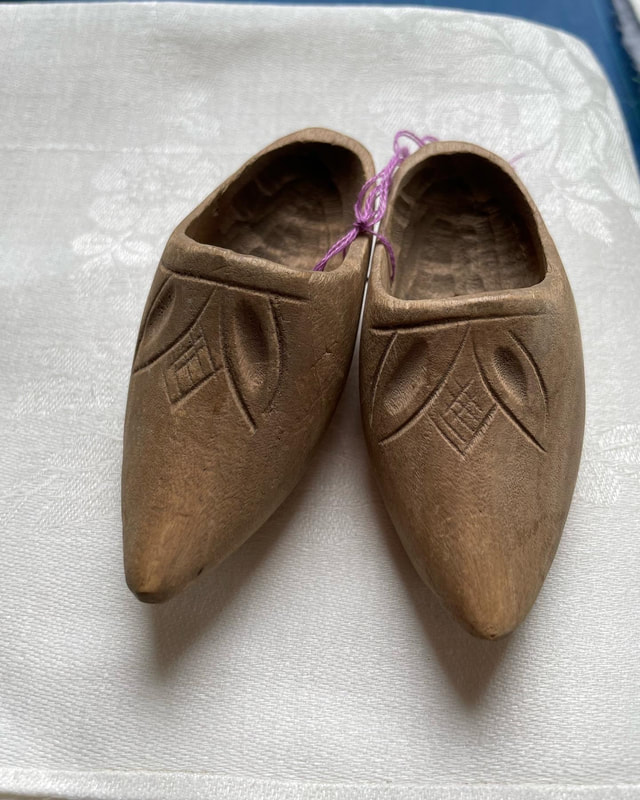
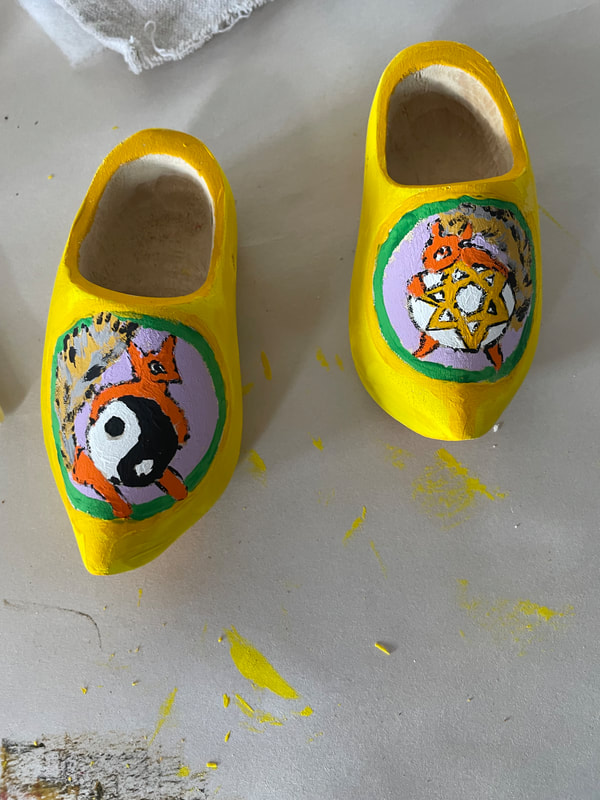
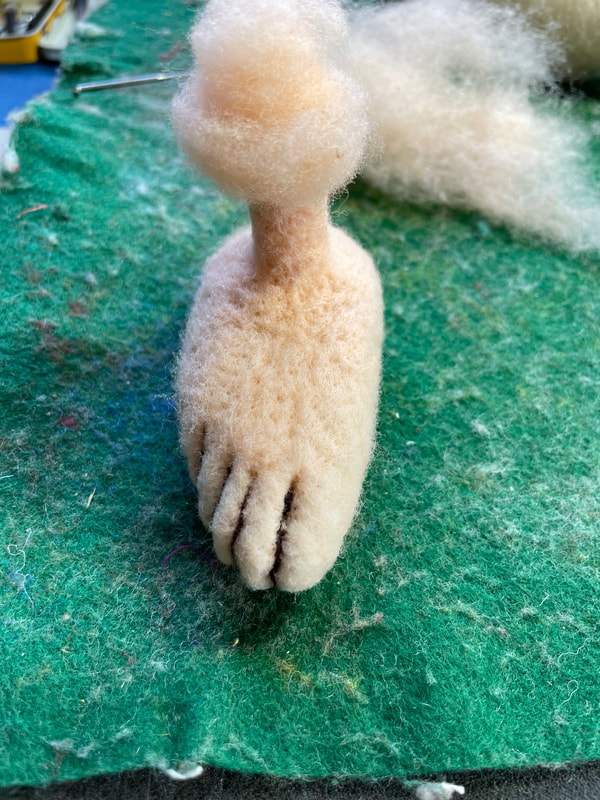
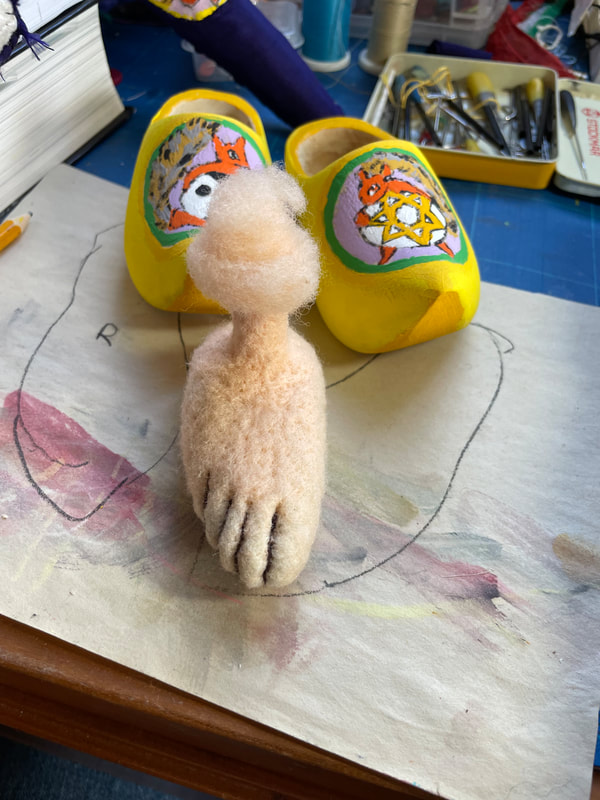
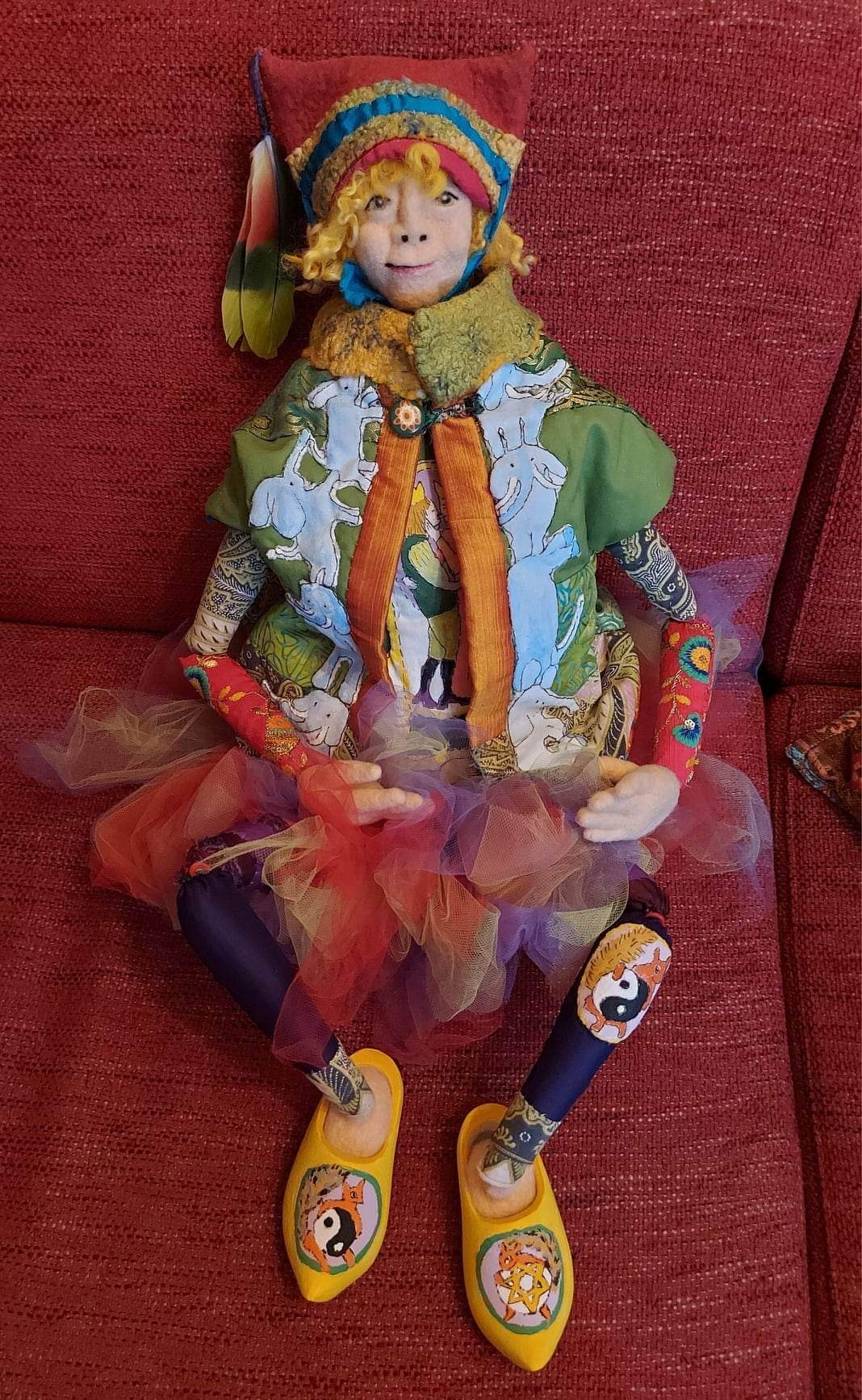
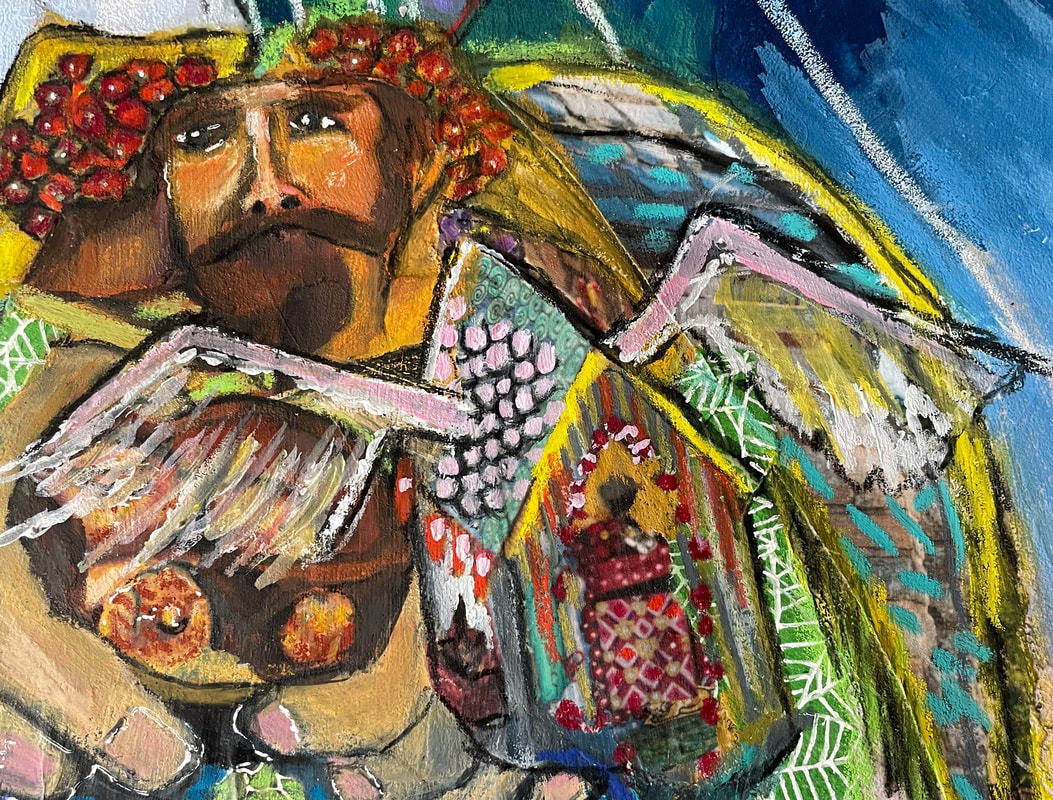
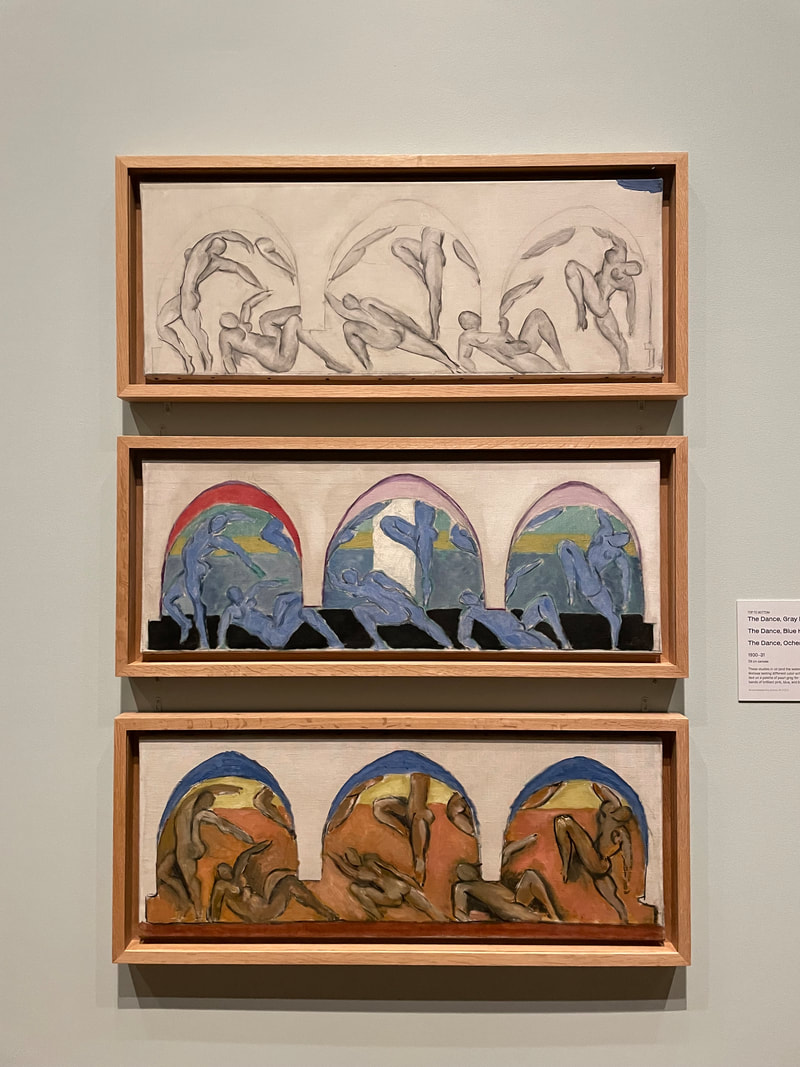
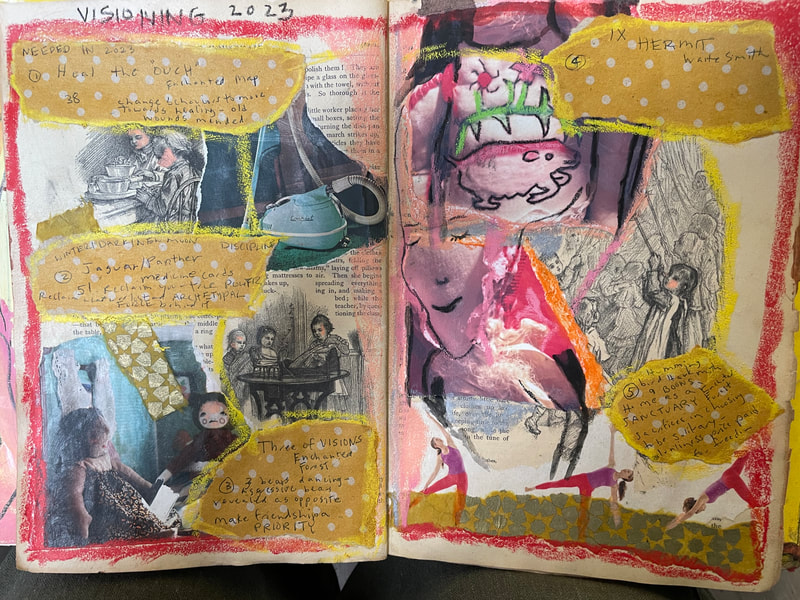
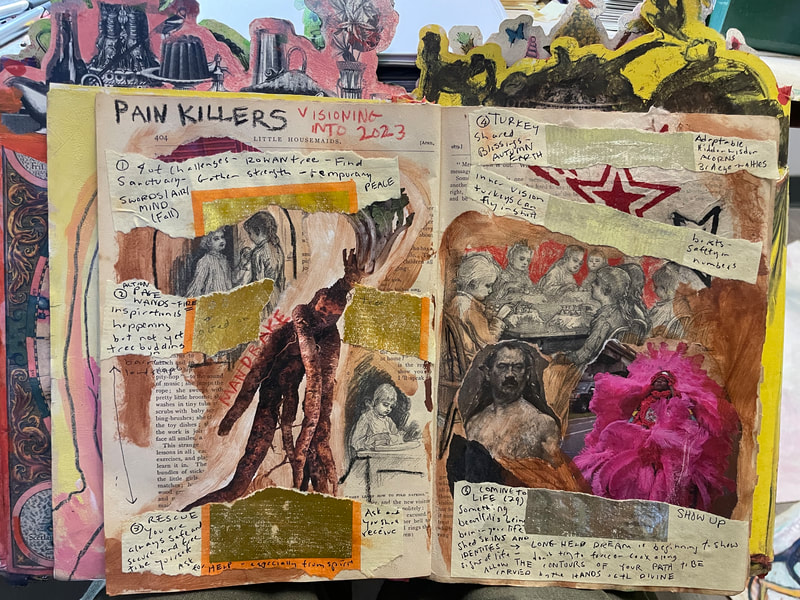
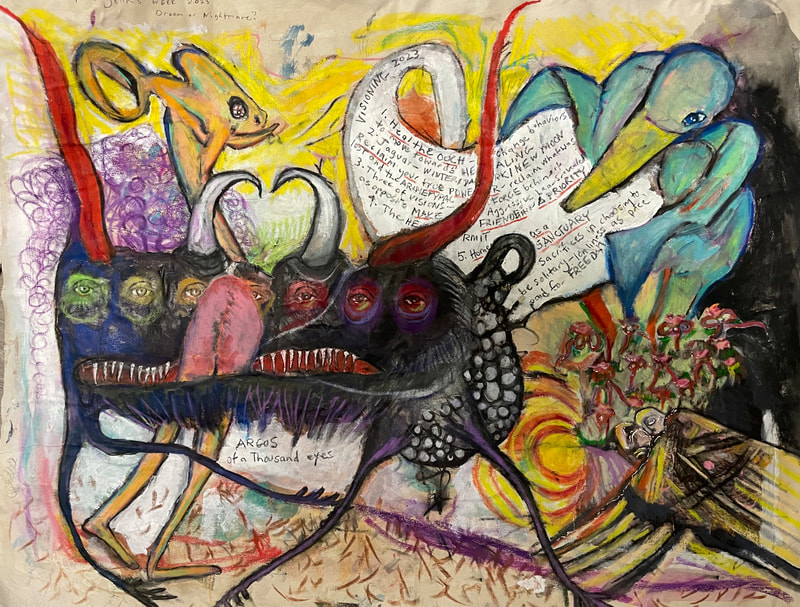

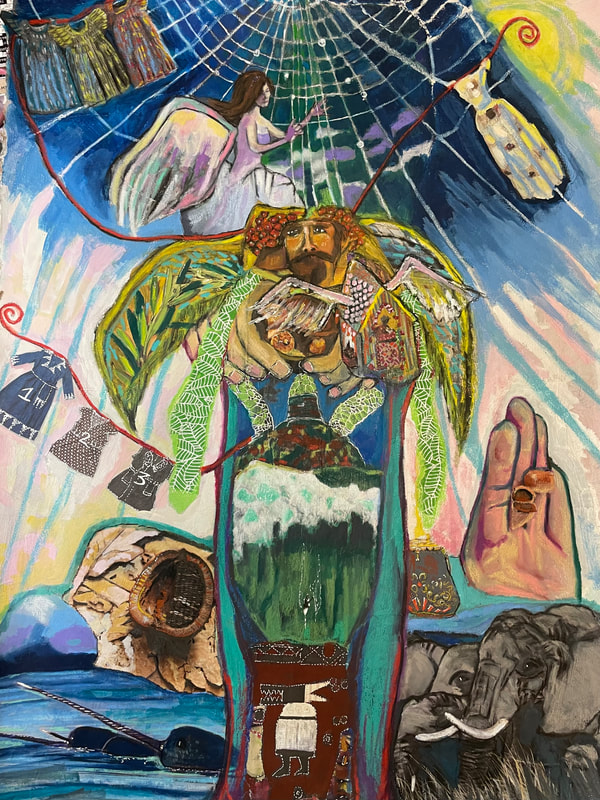
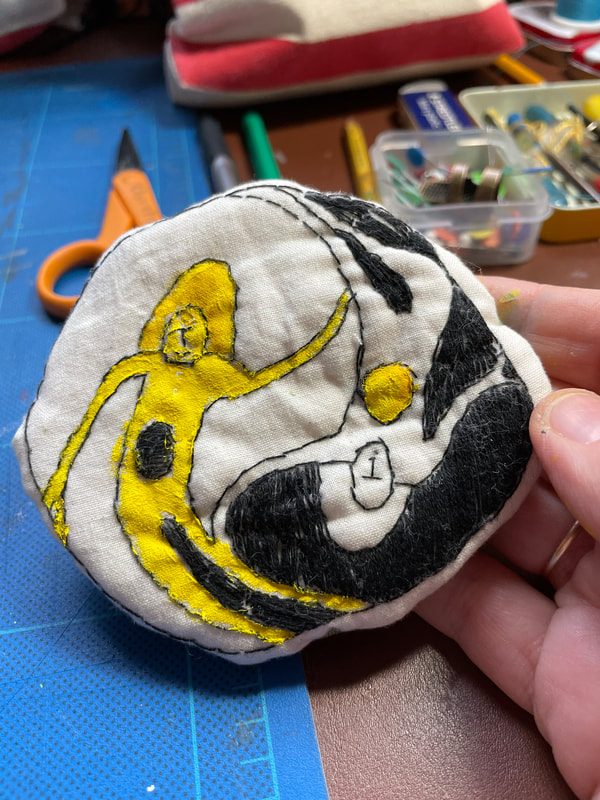
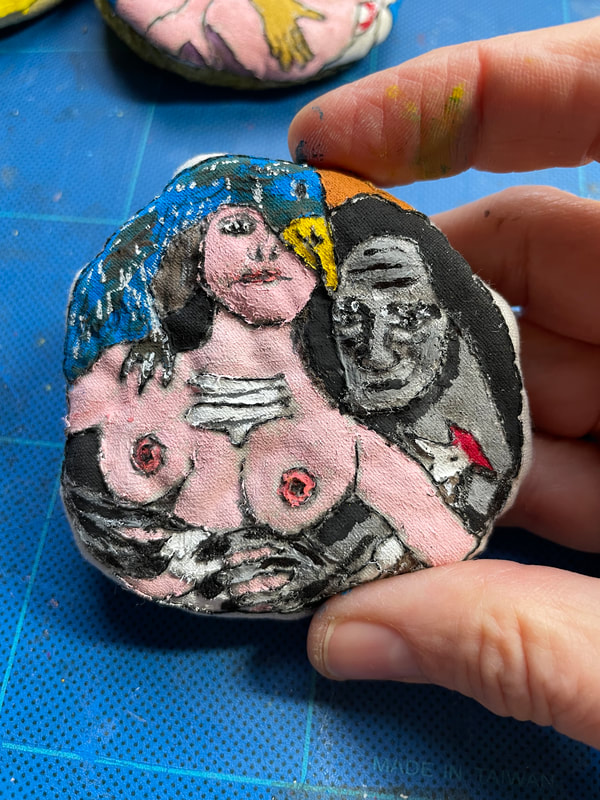
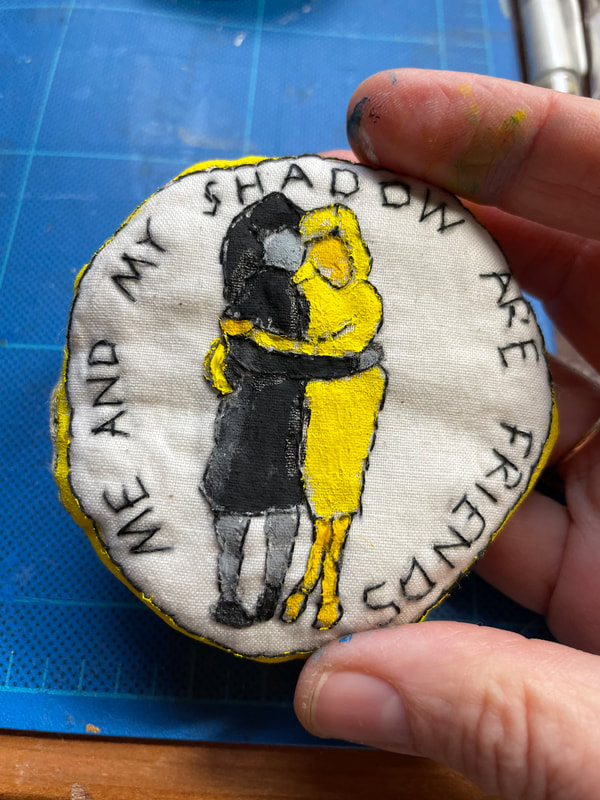
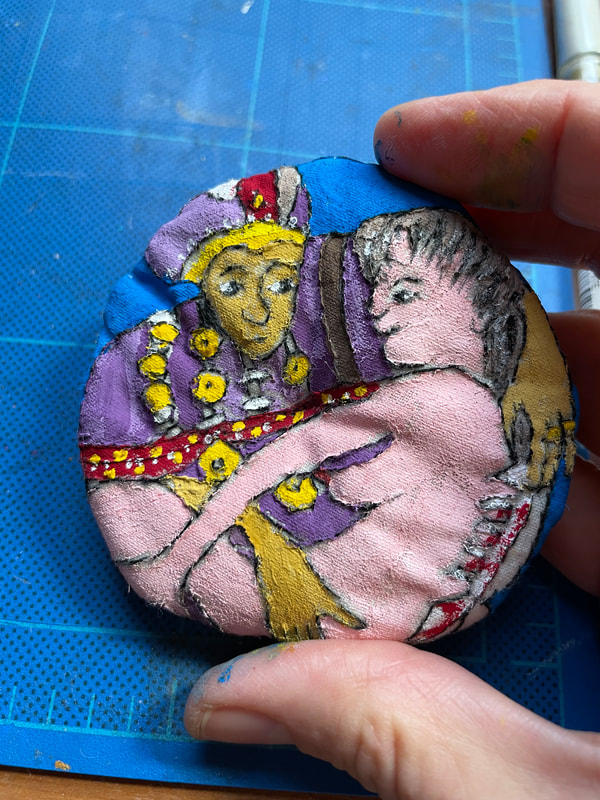
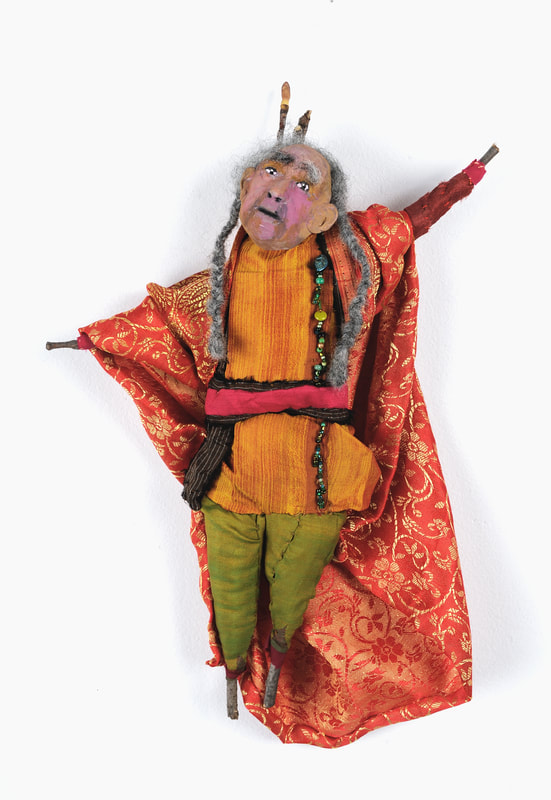
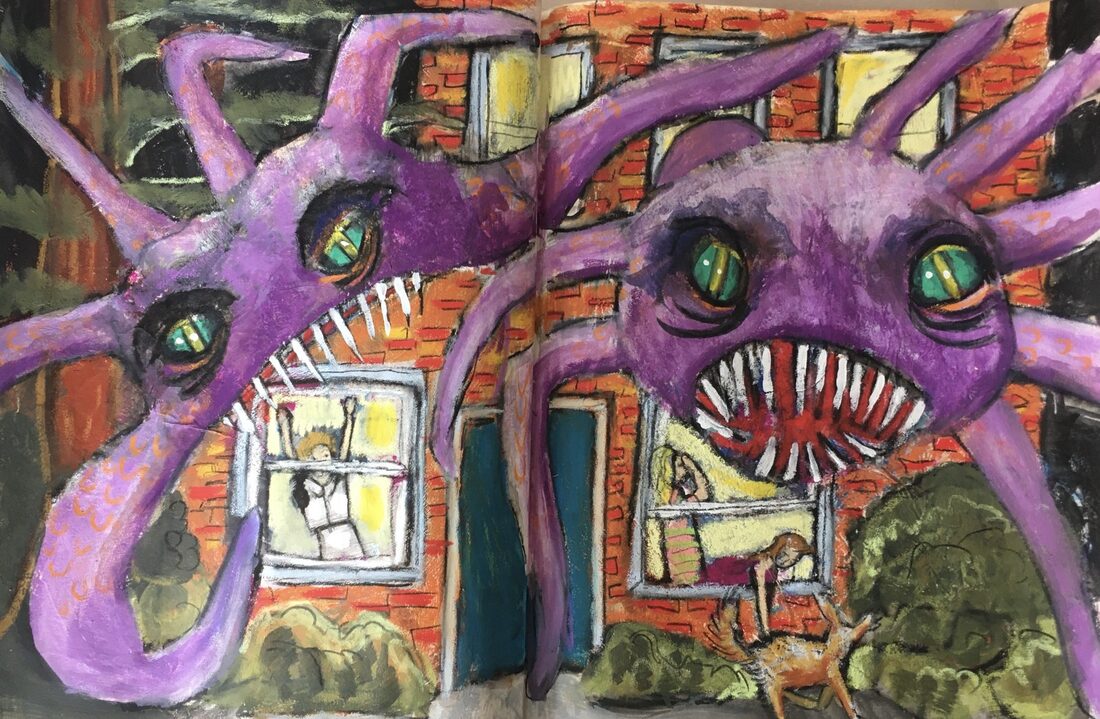
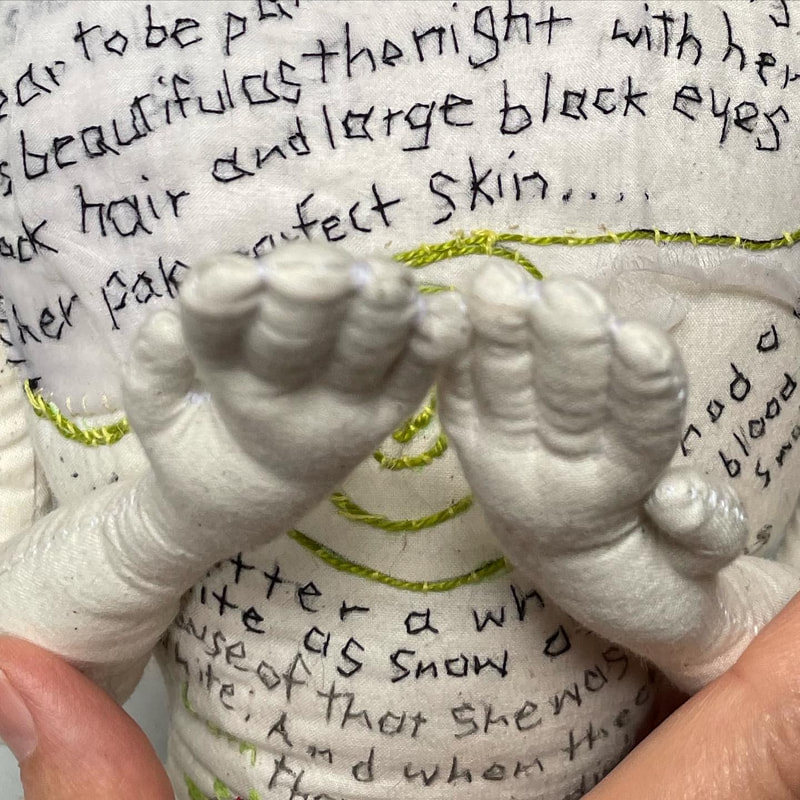
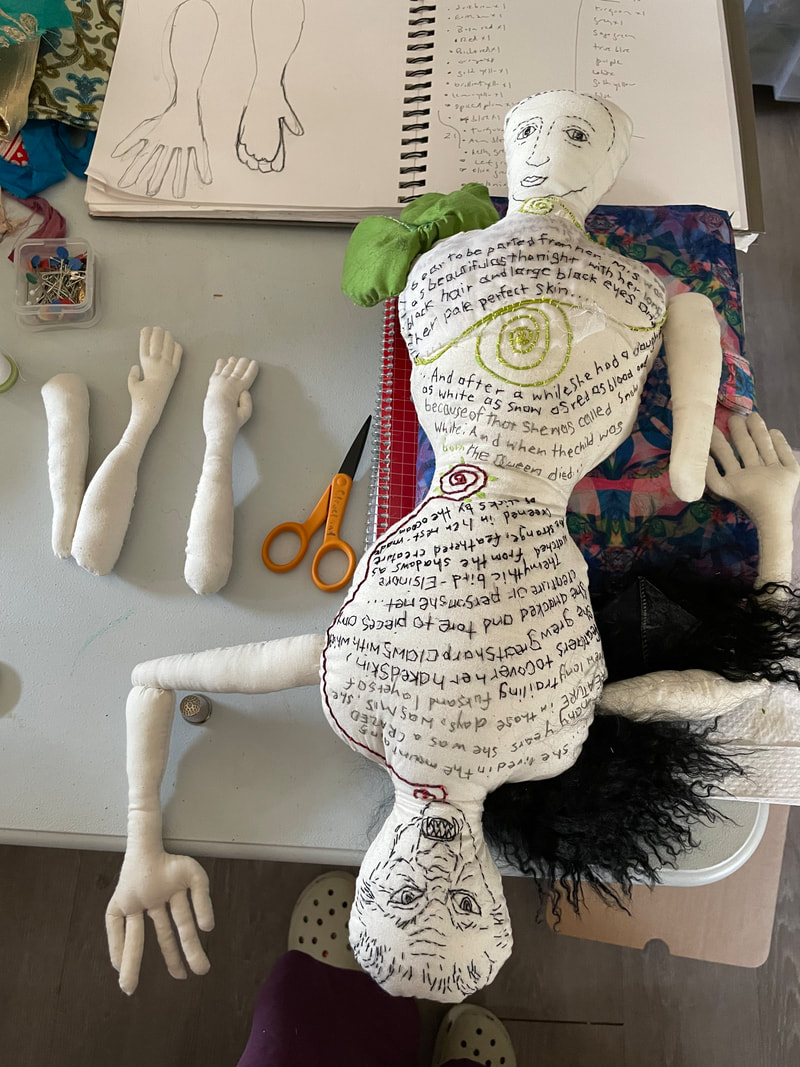
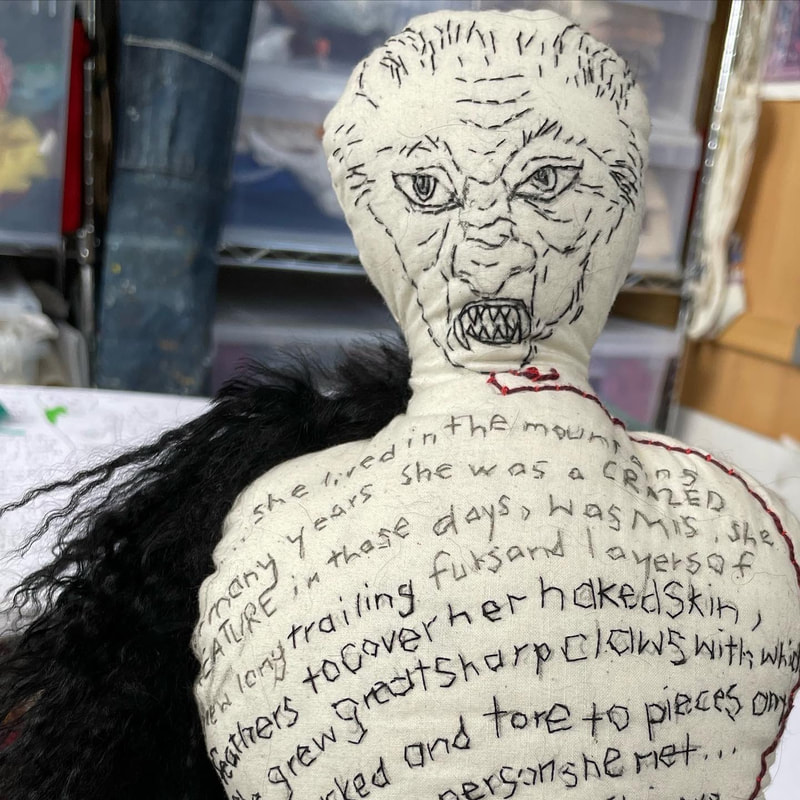
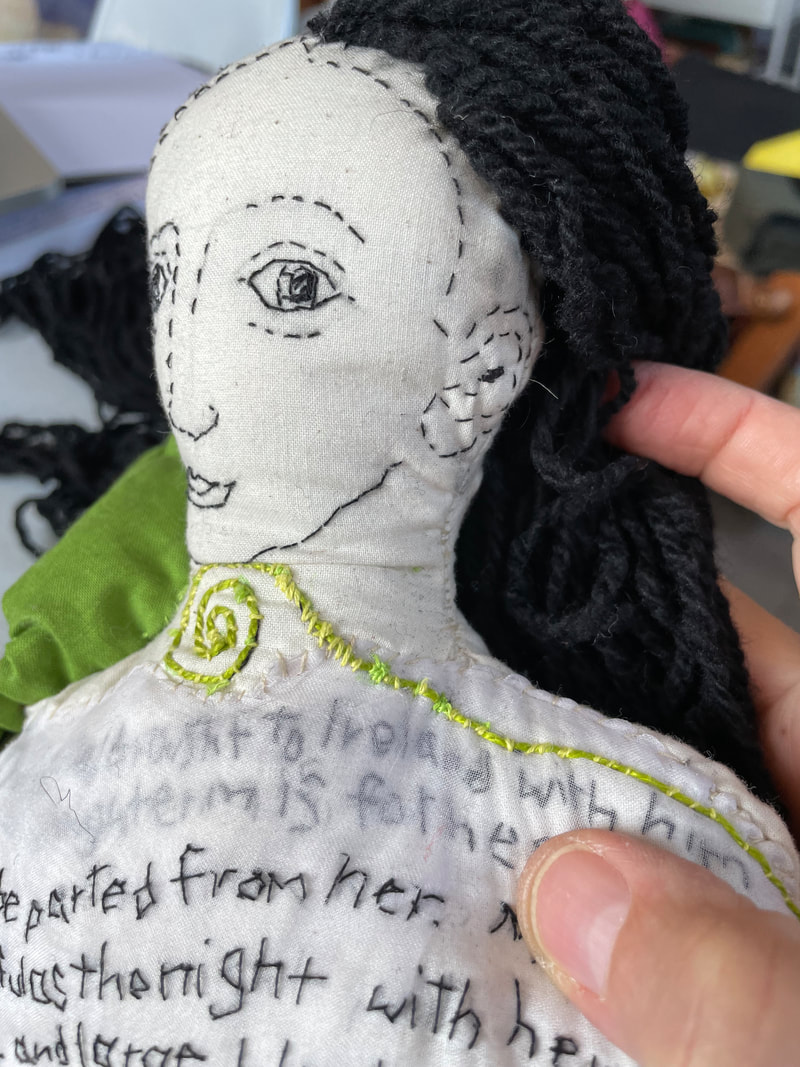
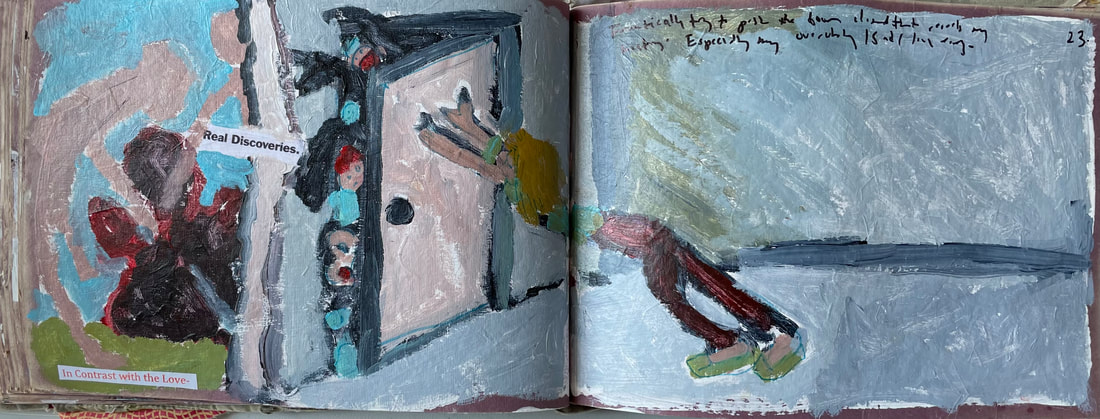
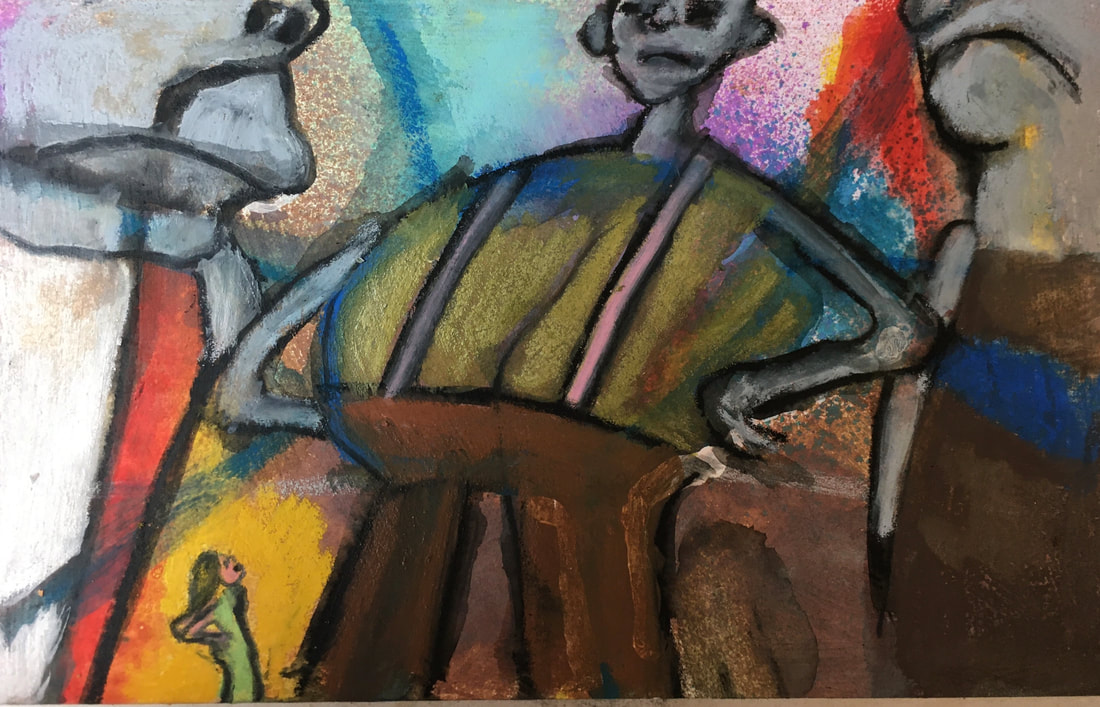
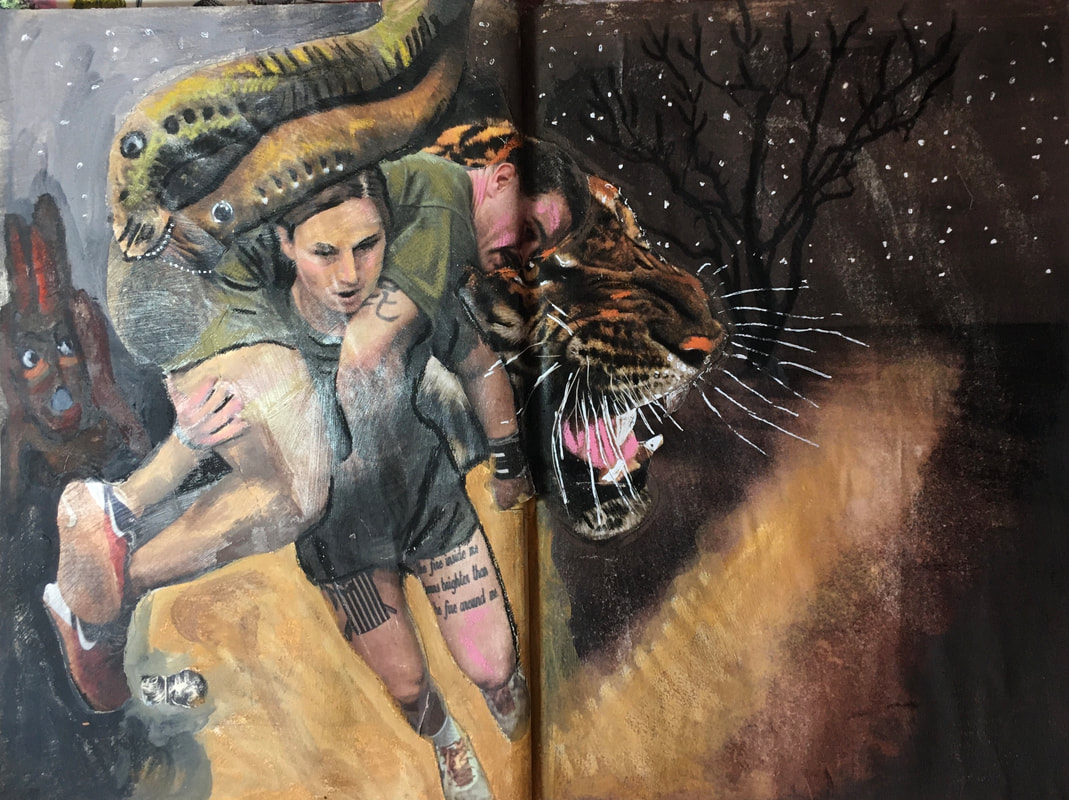
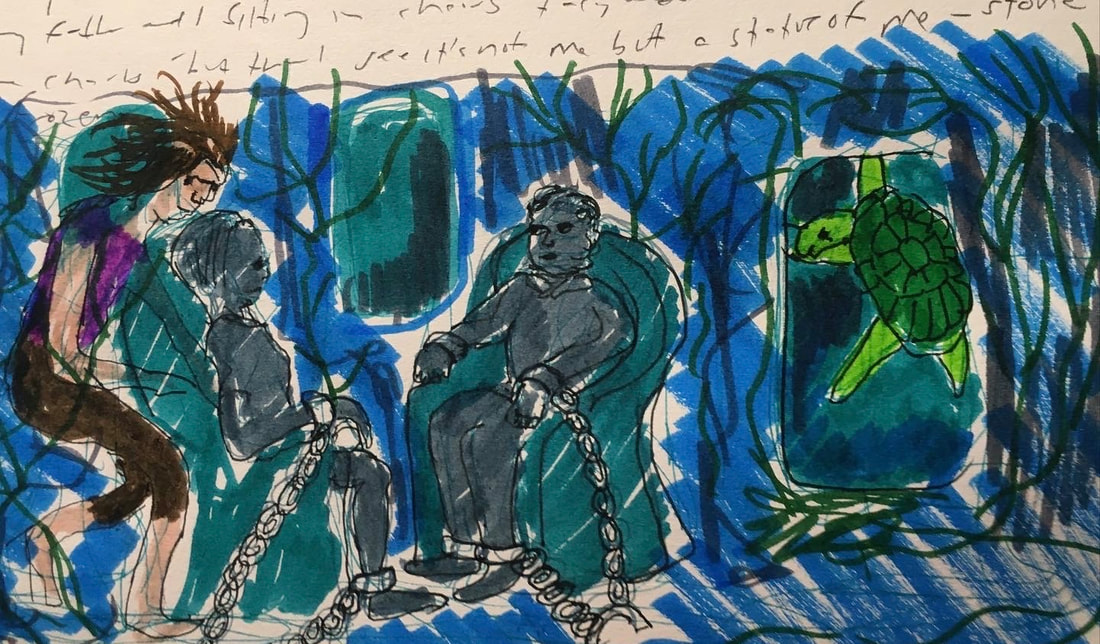
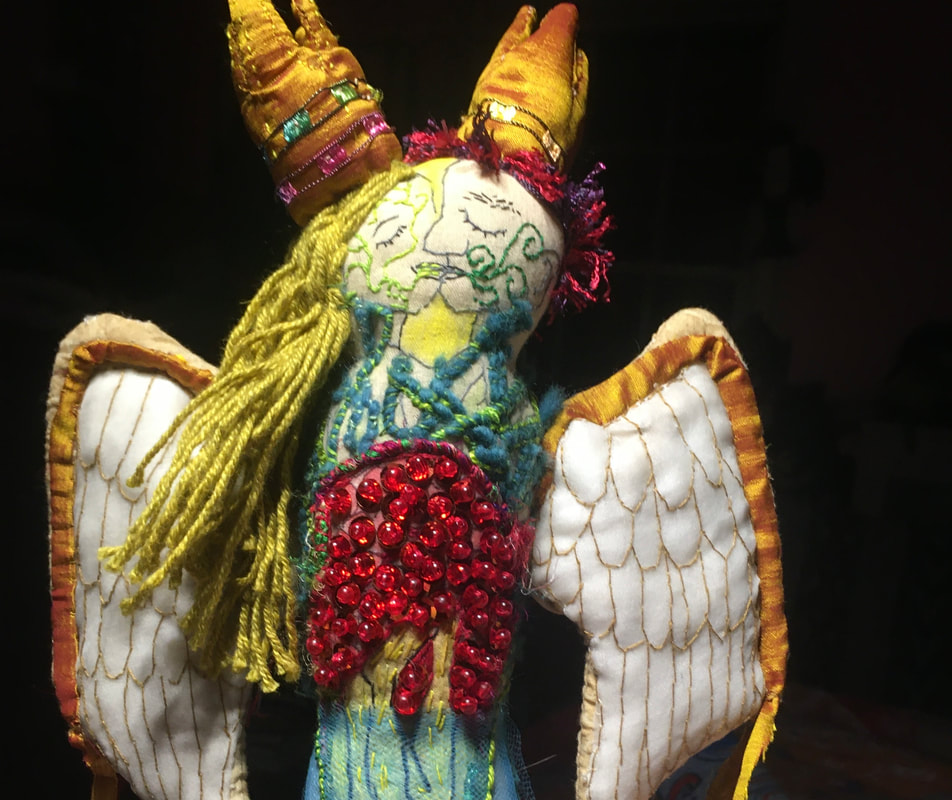
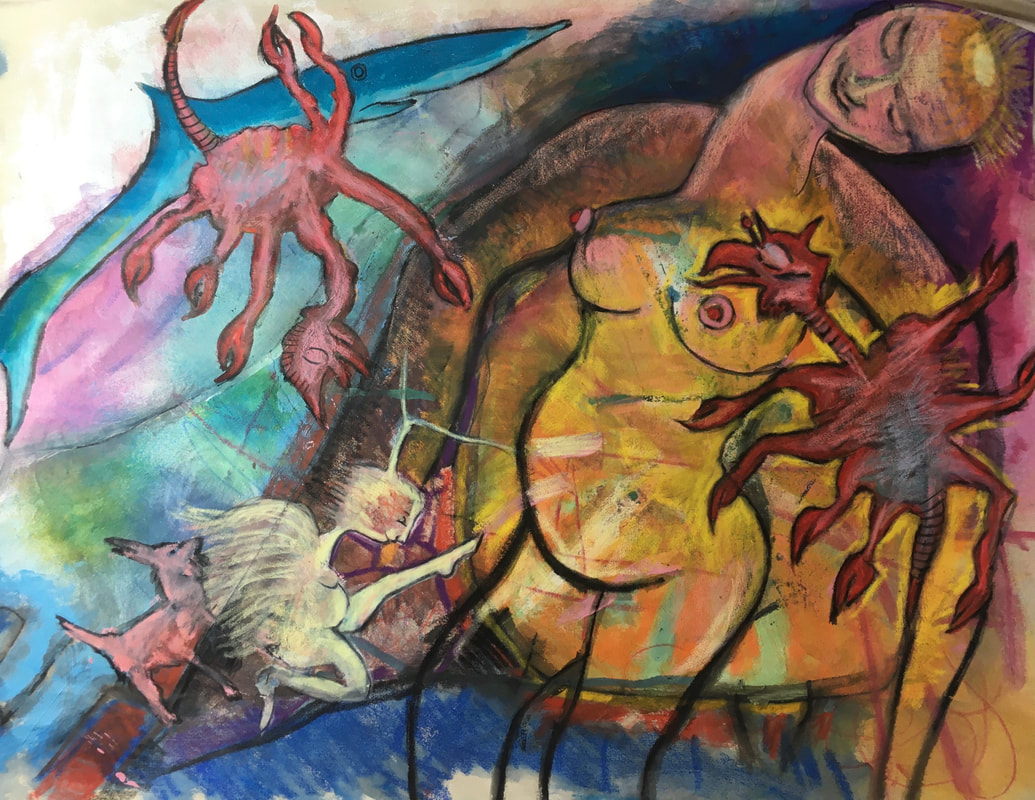
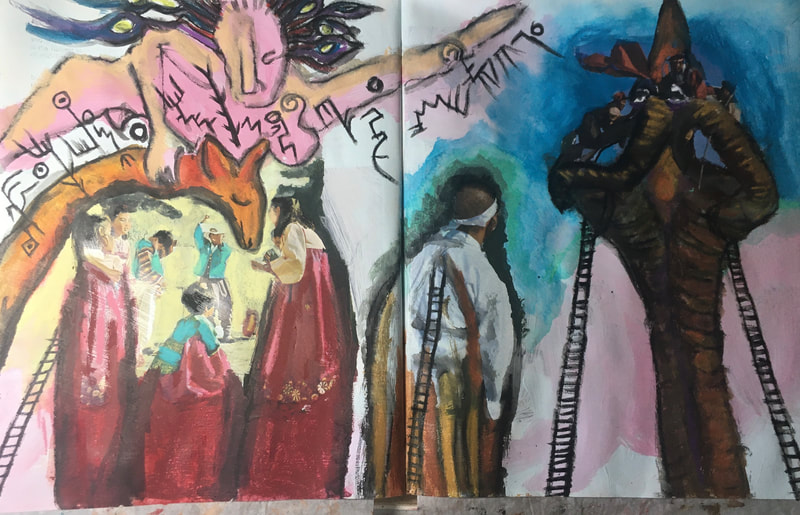
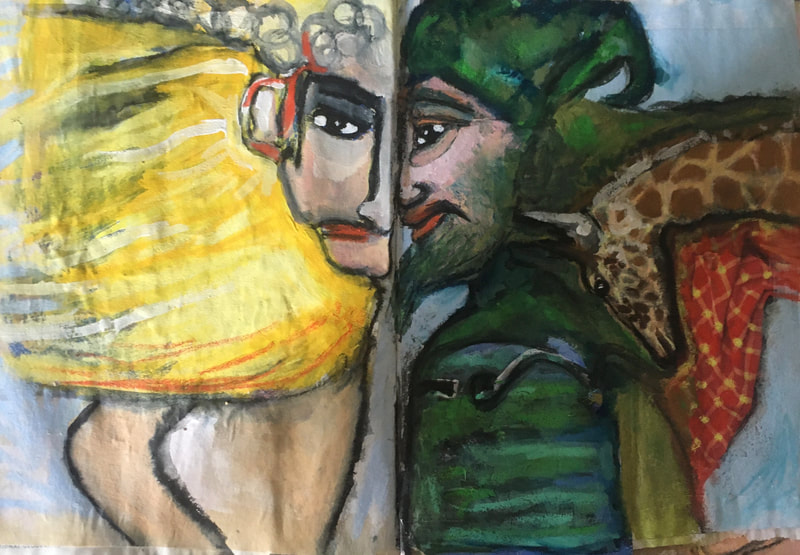
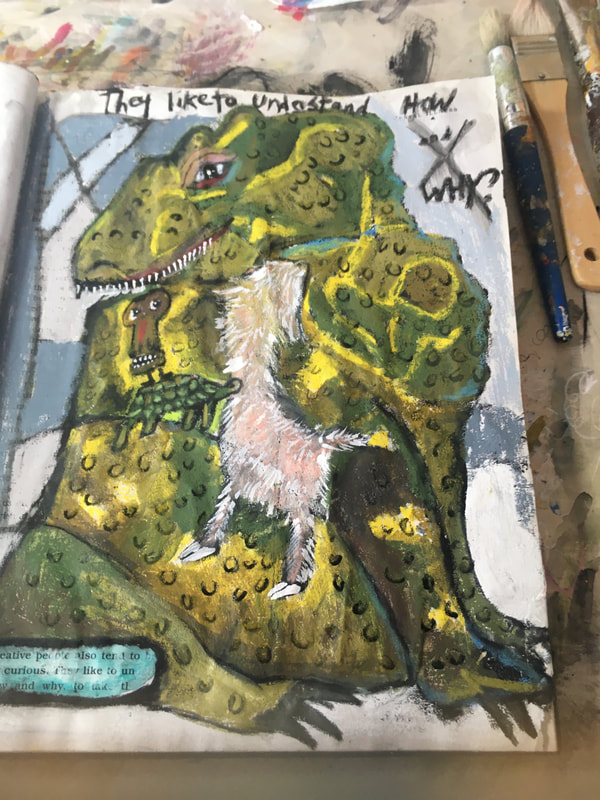
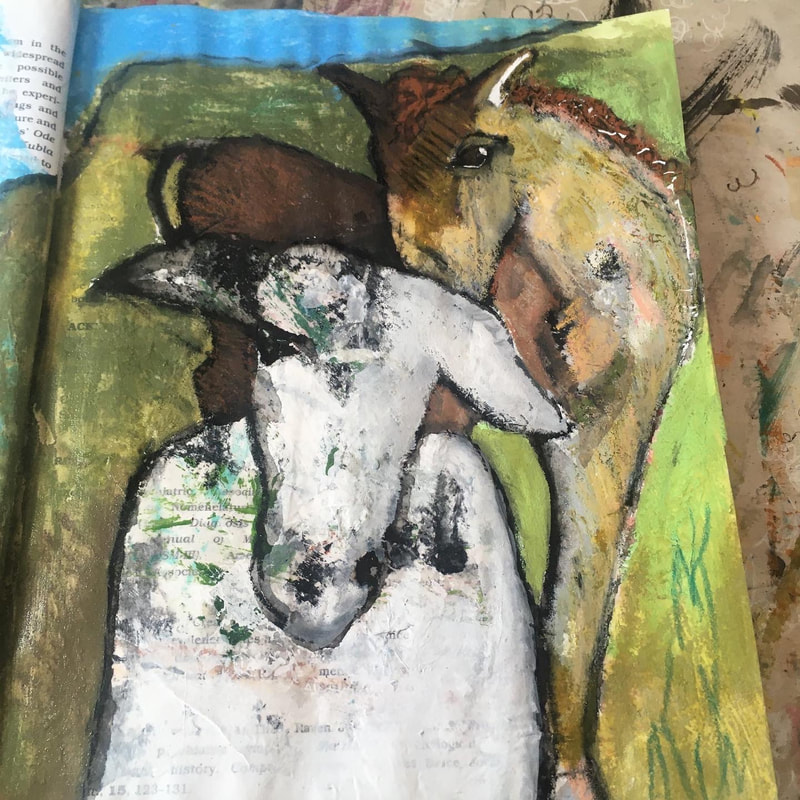
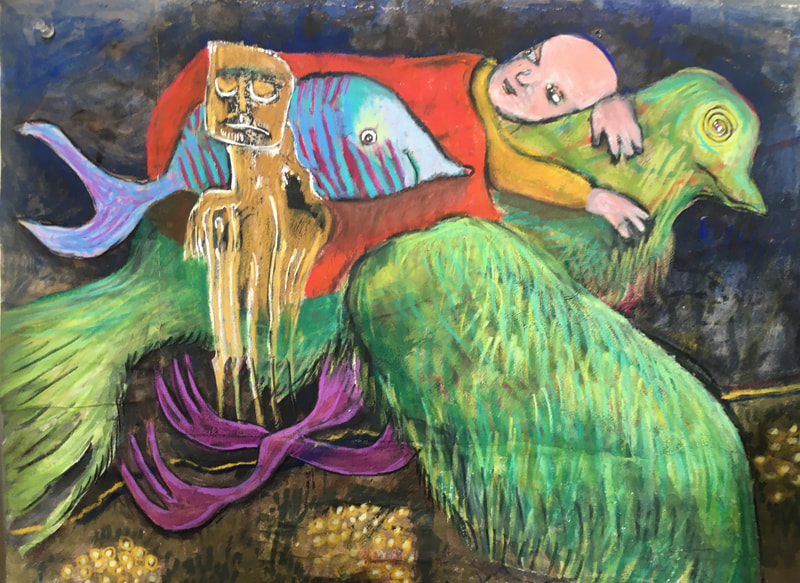
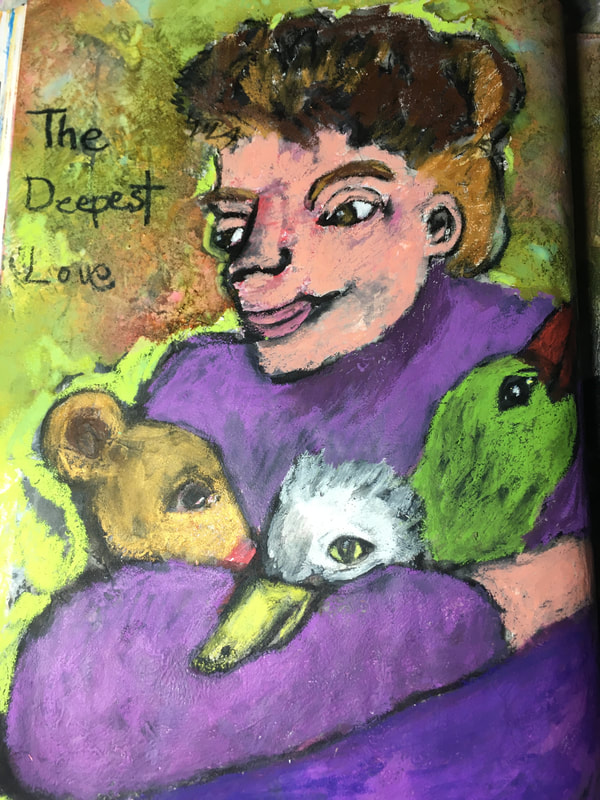
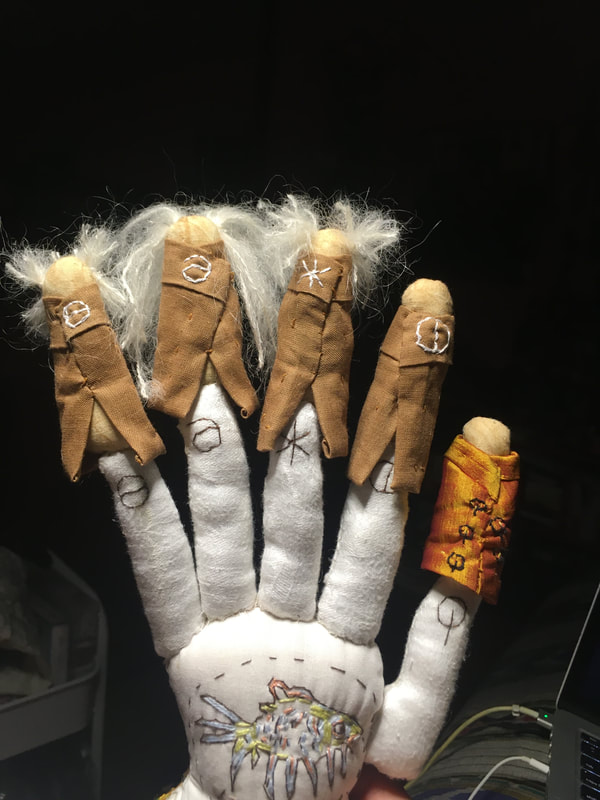
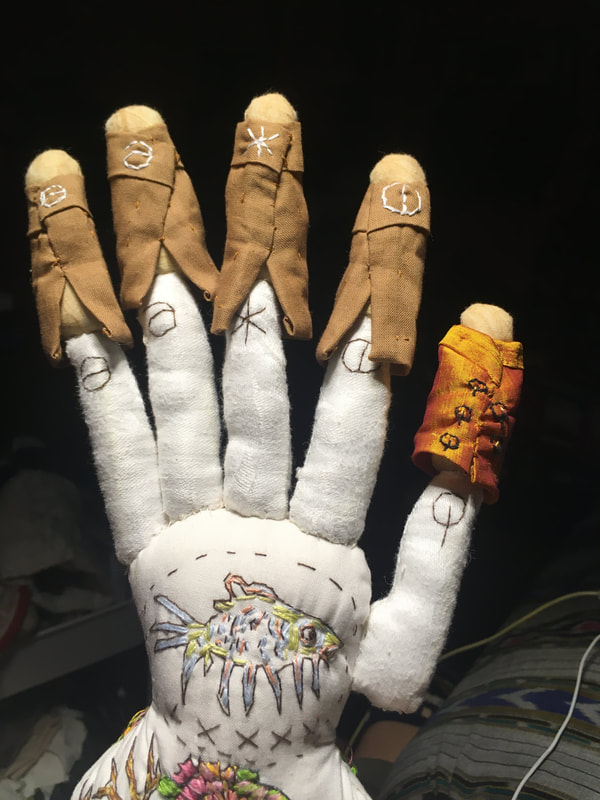
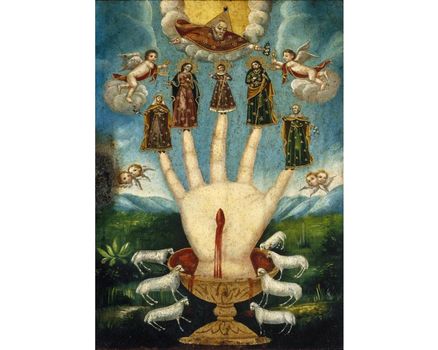
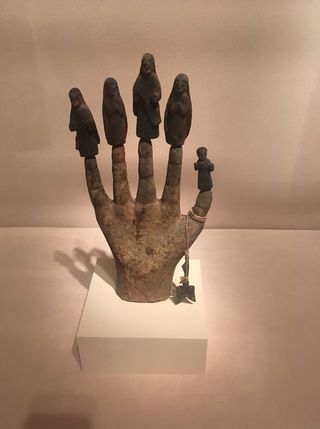
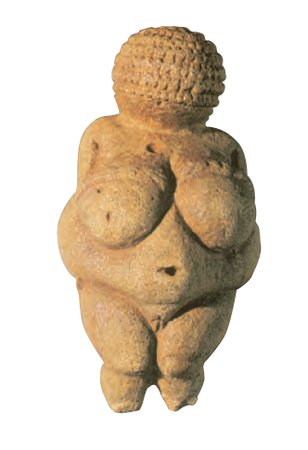
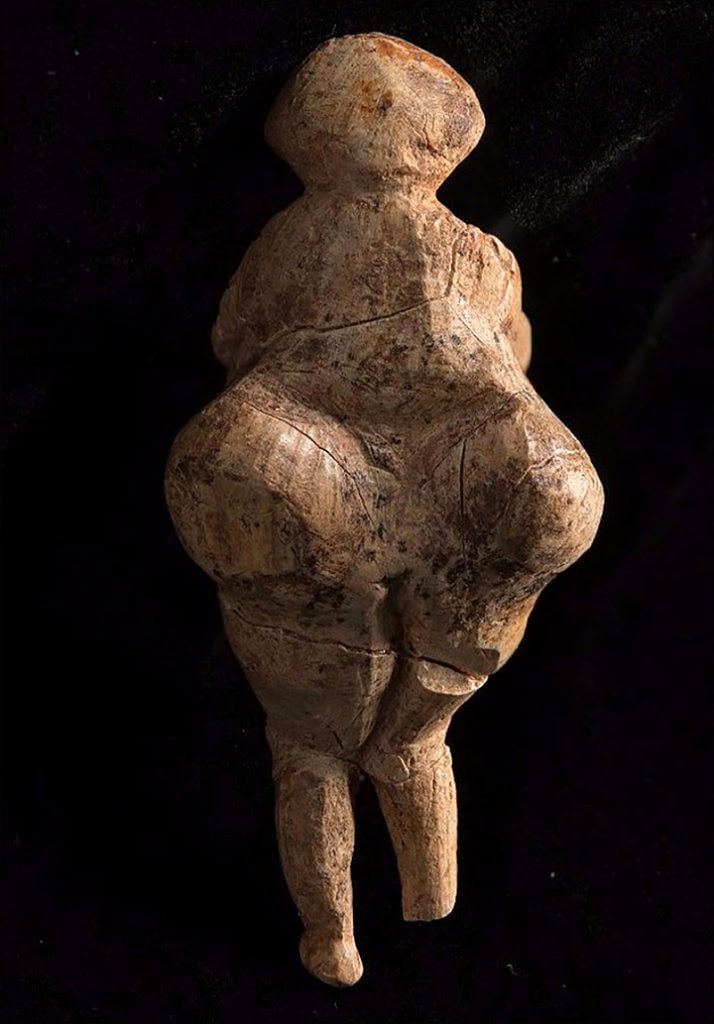
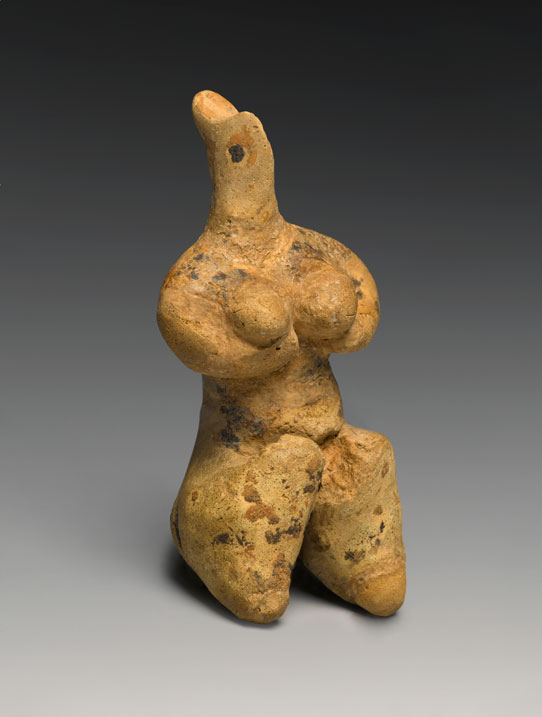
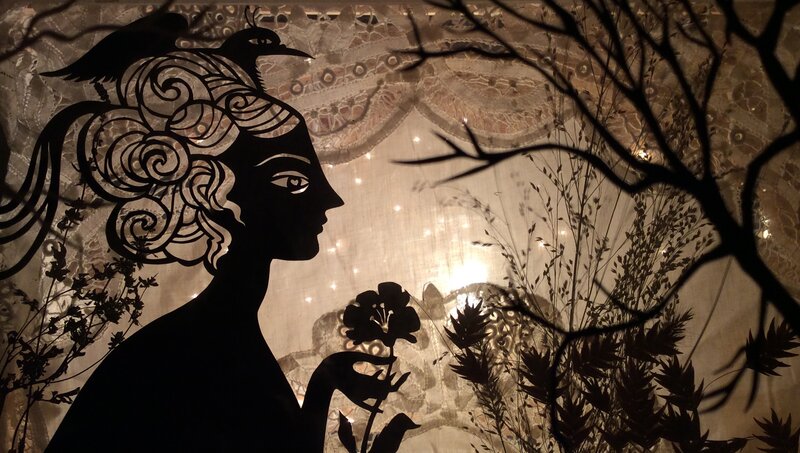
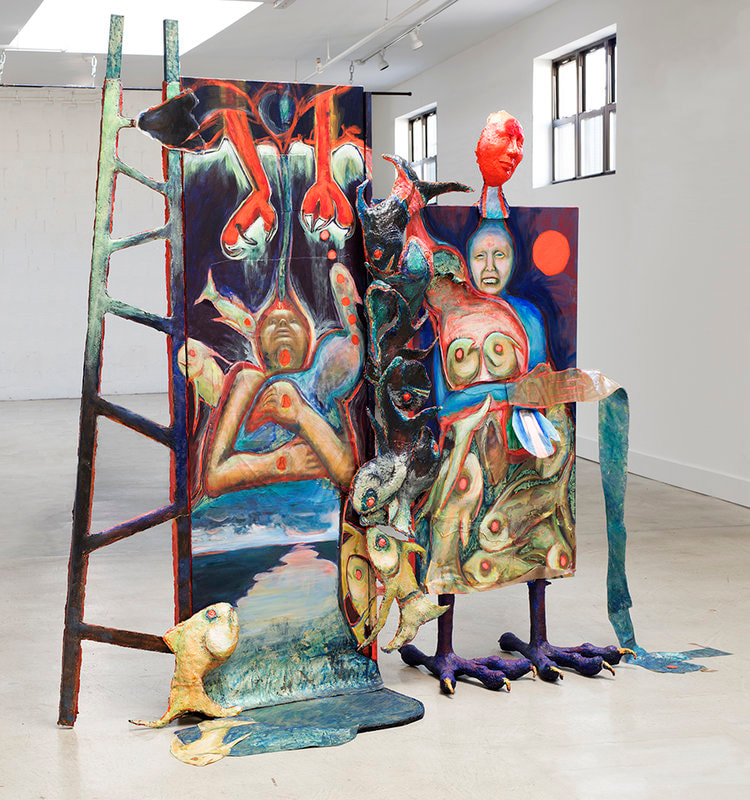
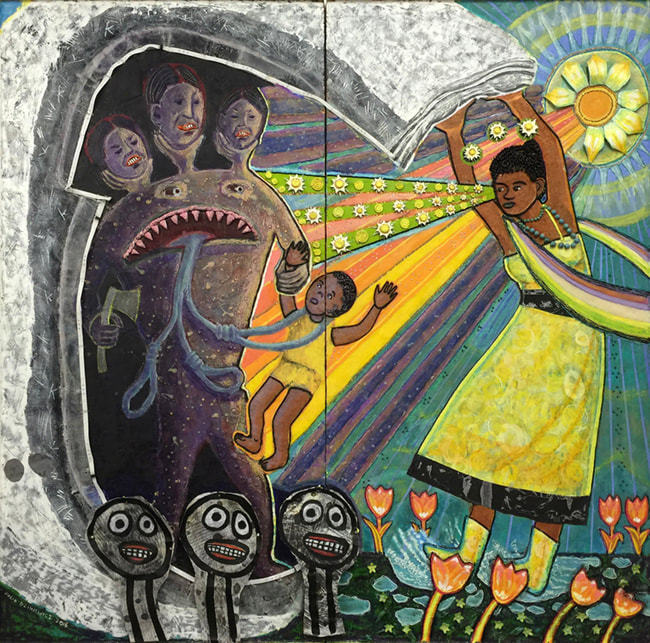
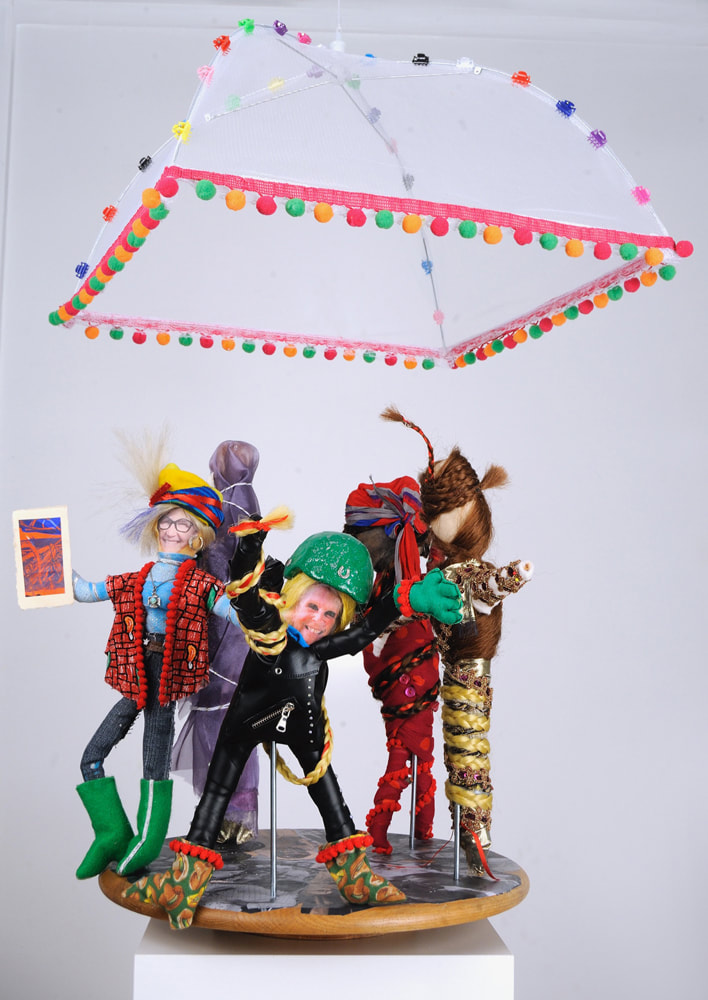
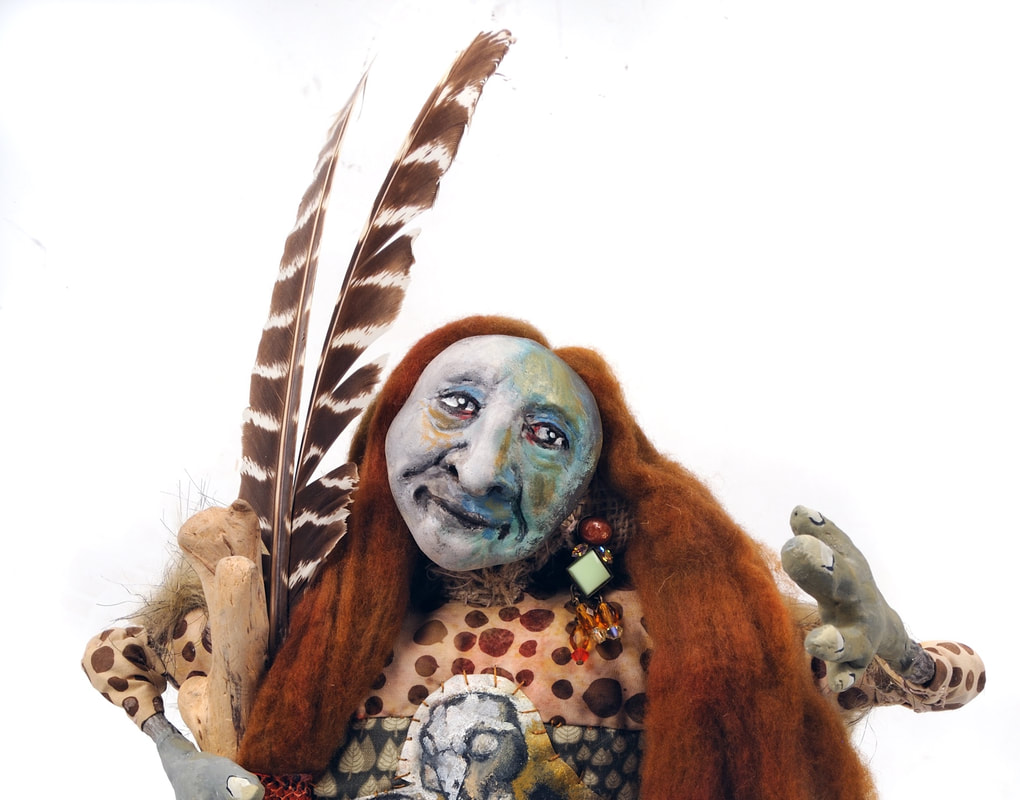
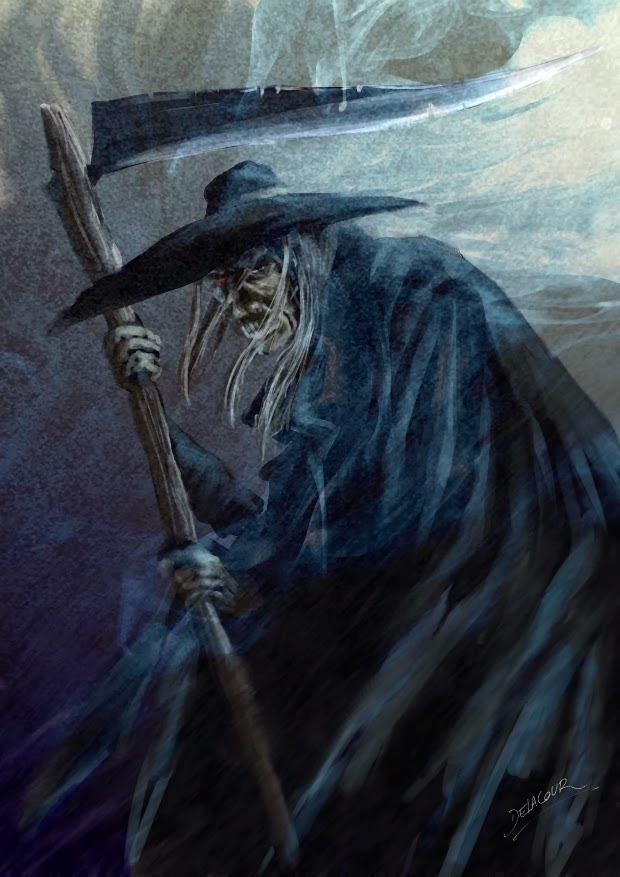
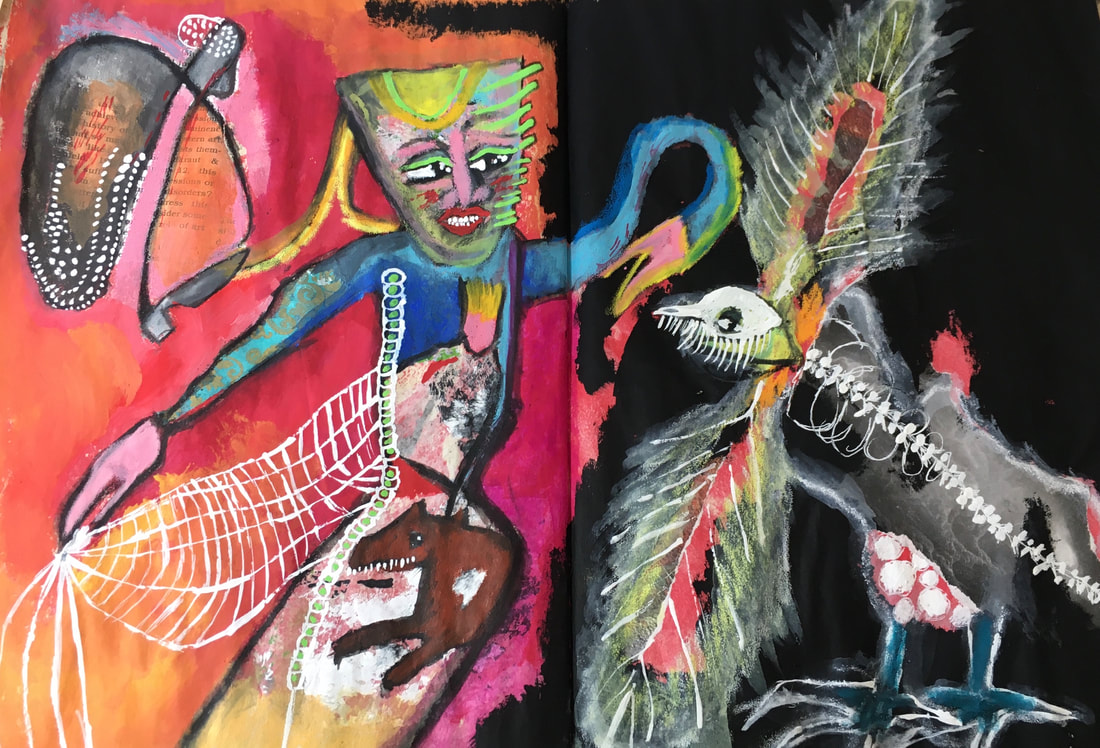
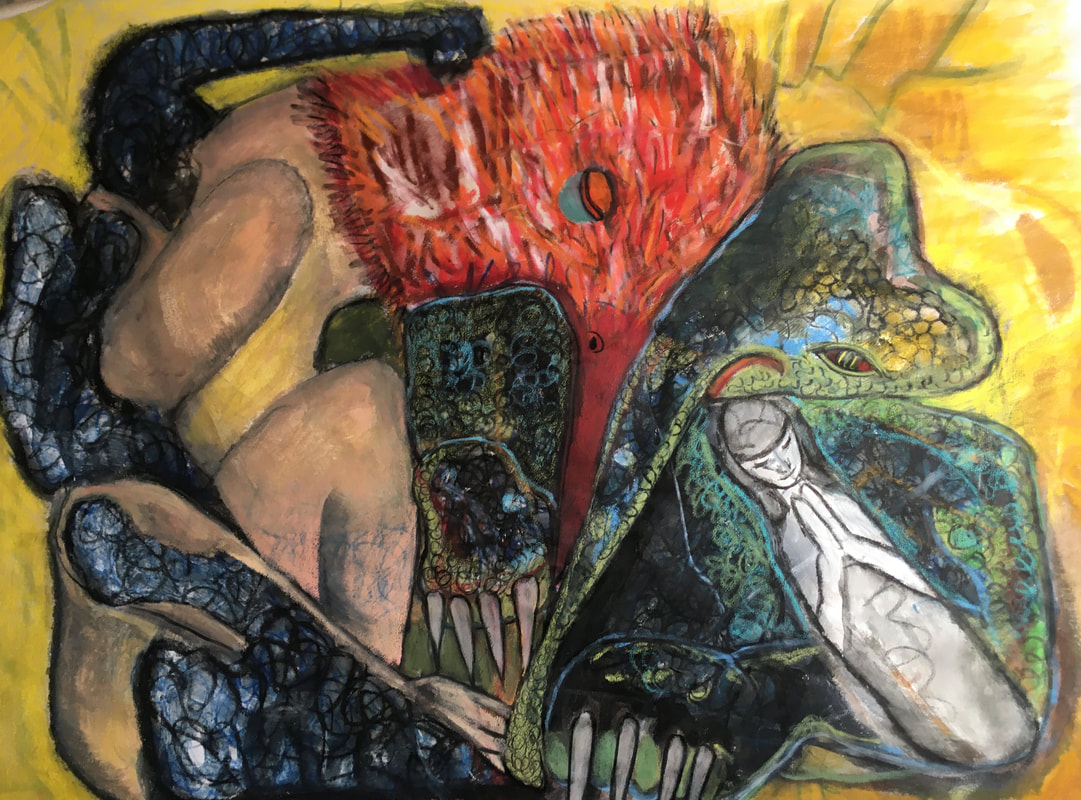
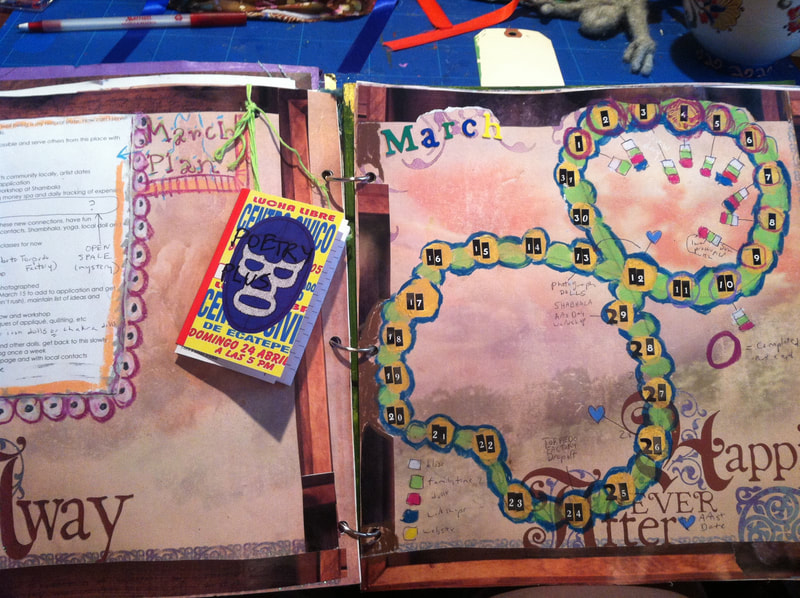
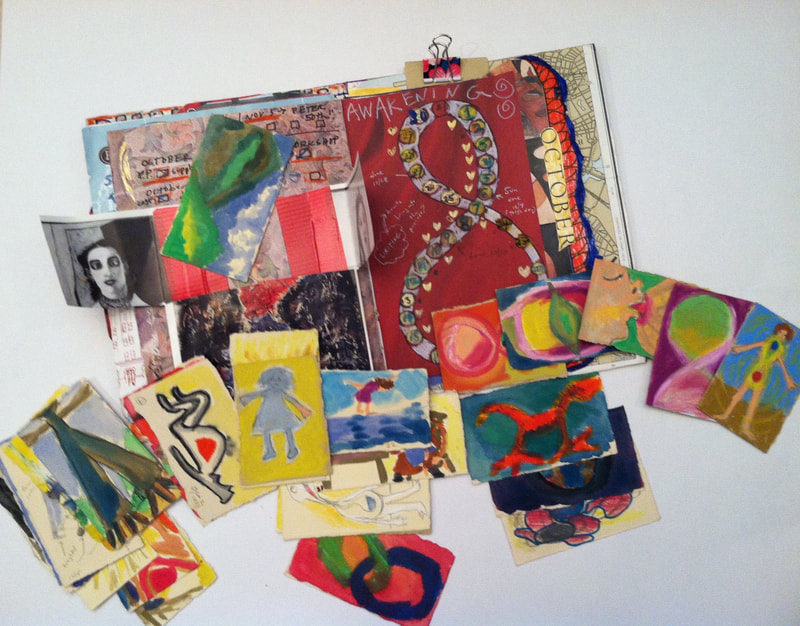

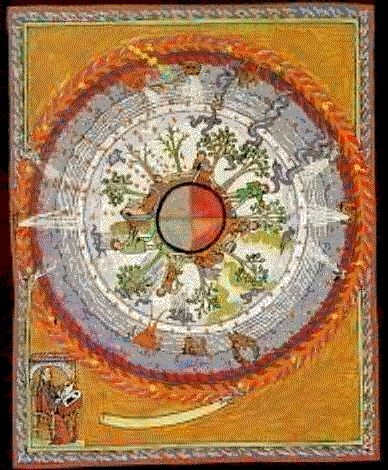
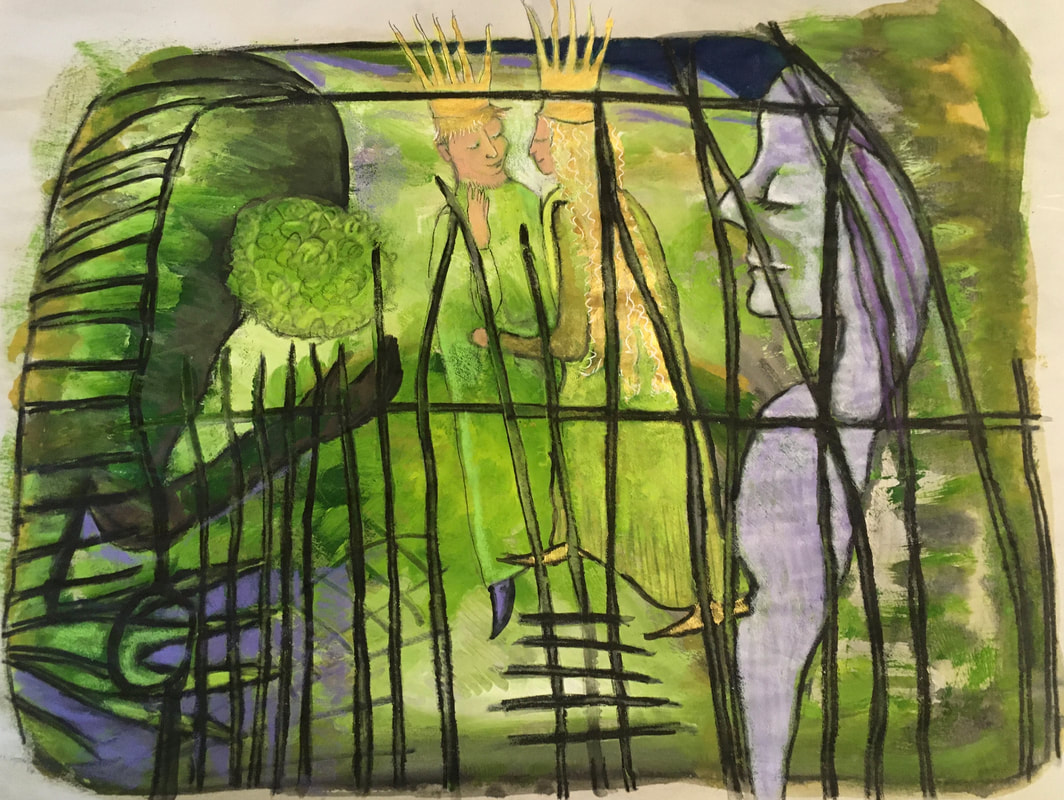
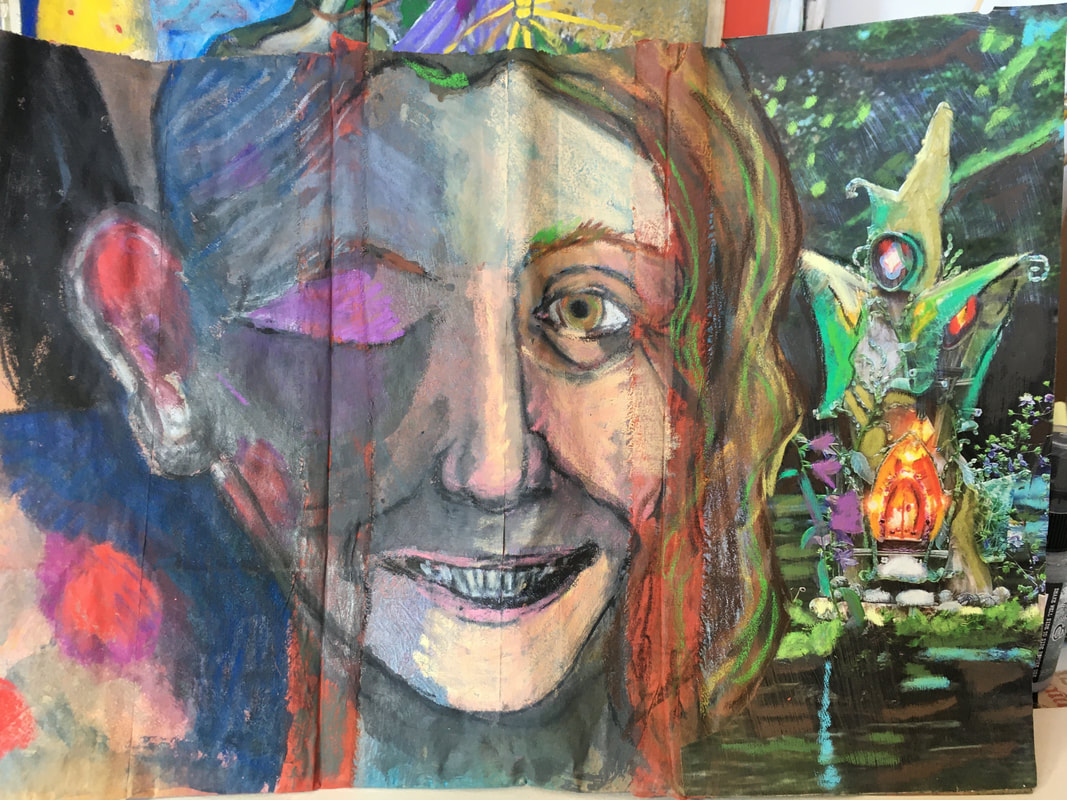
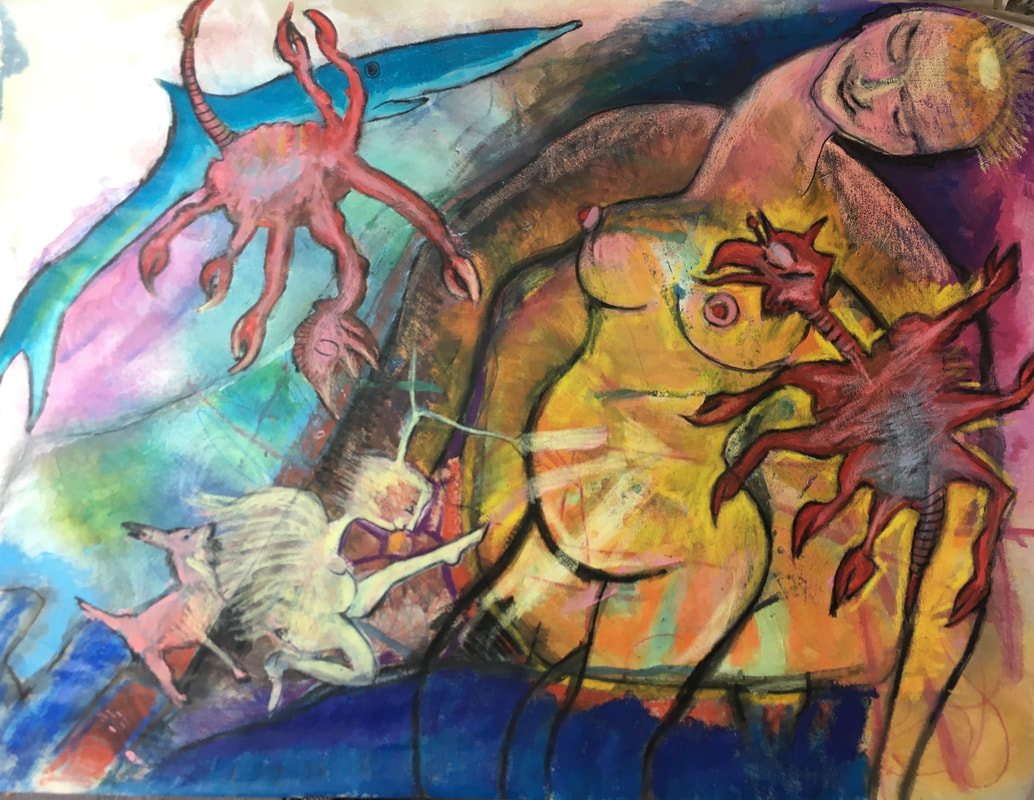
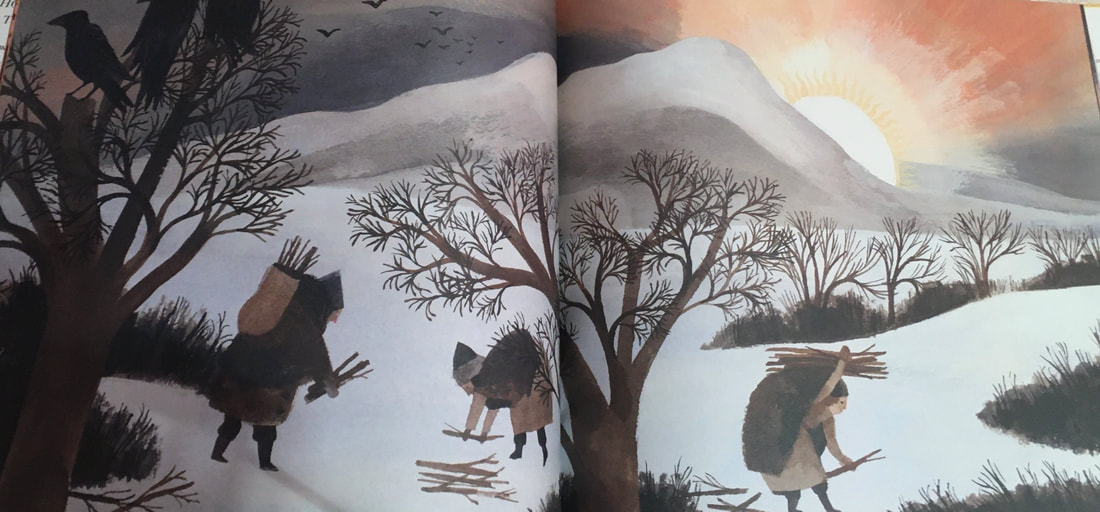
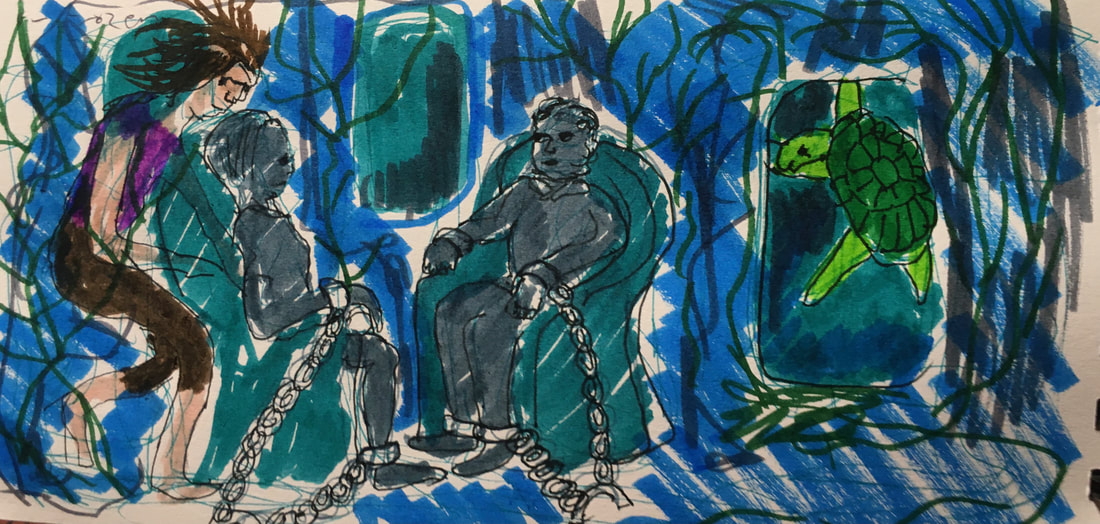
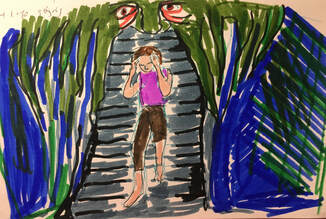
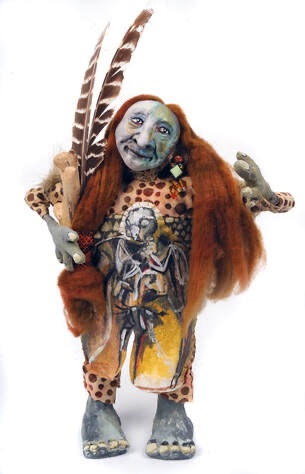
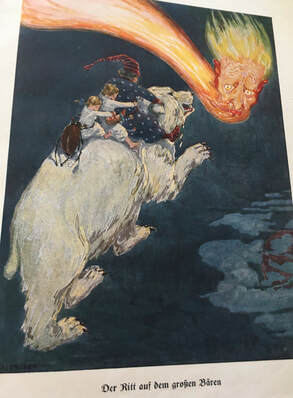

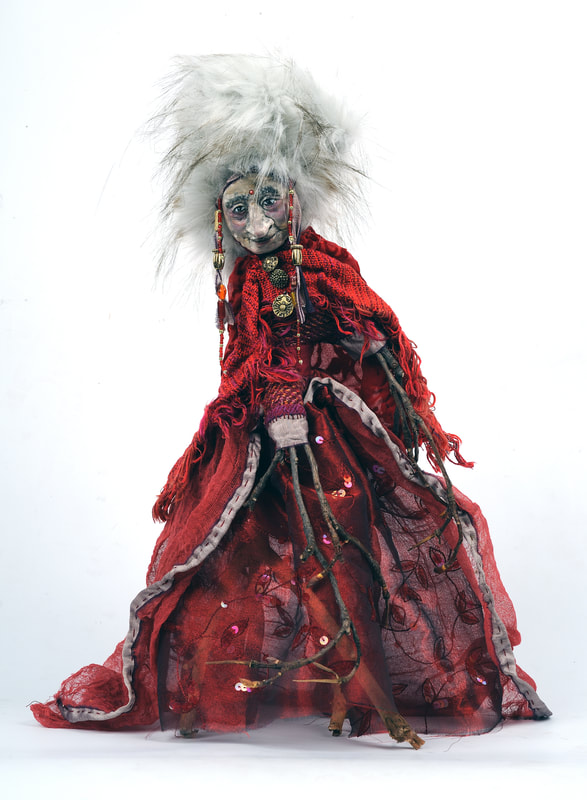
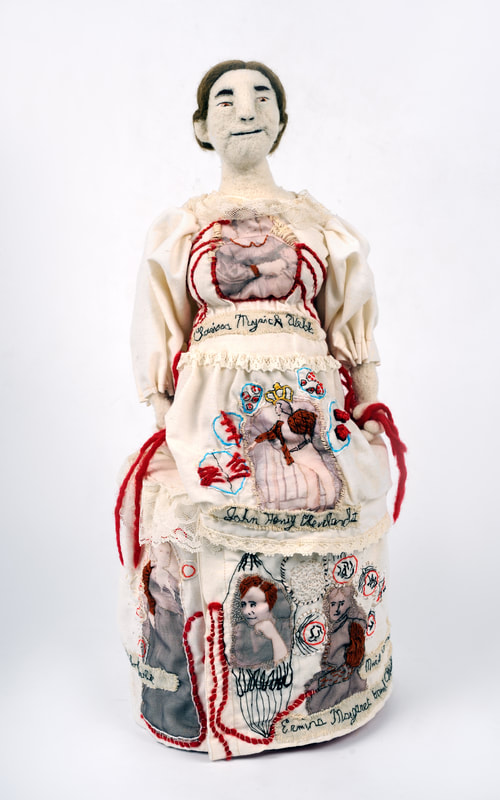
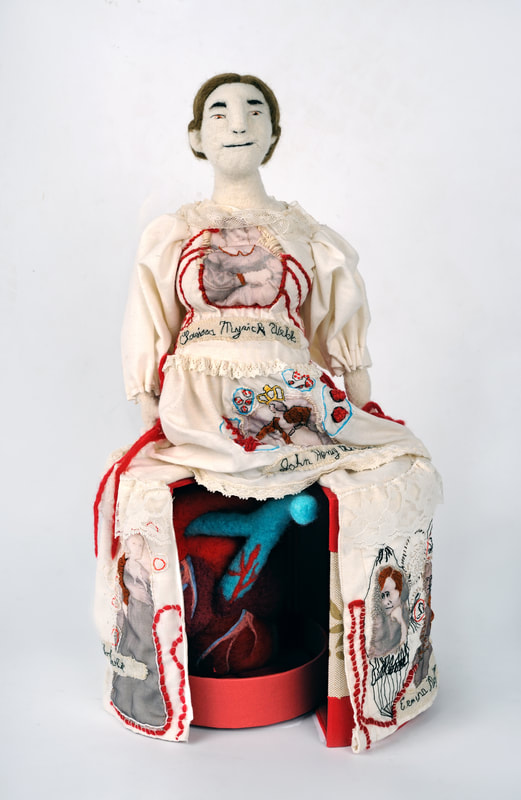
 RSS Feed
RSS Feed